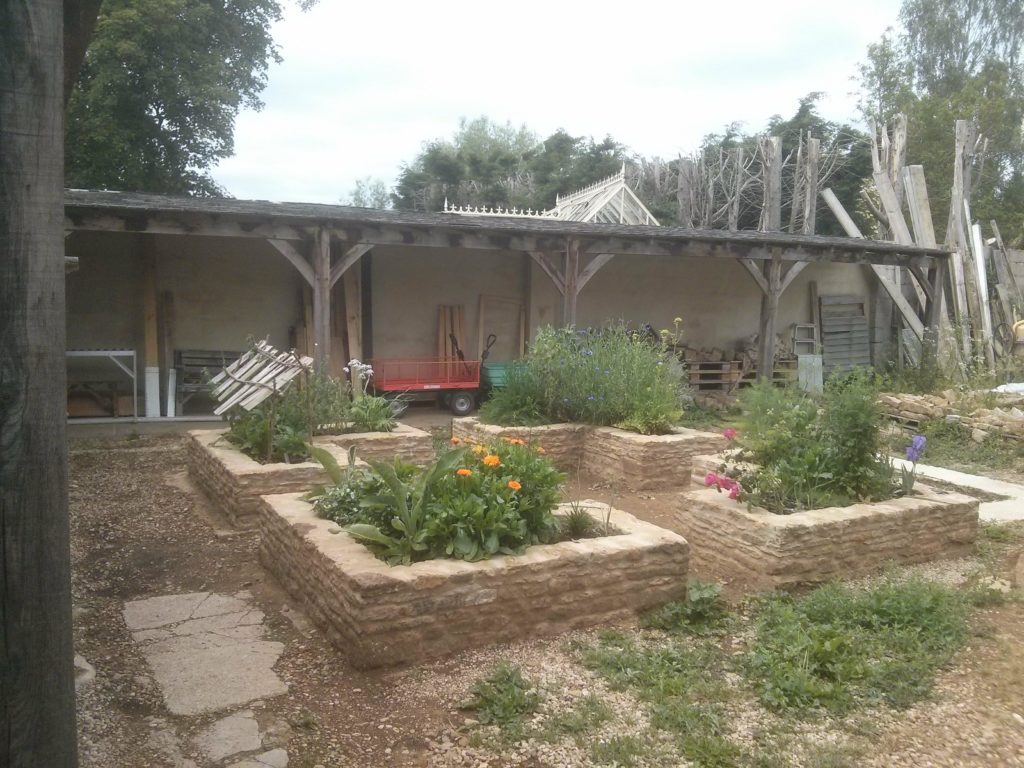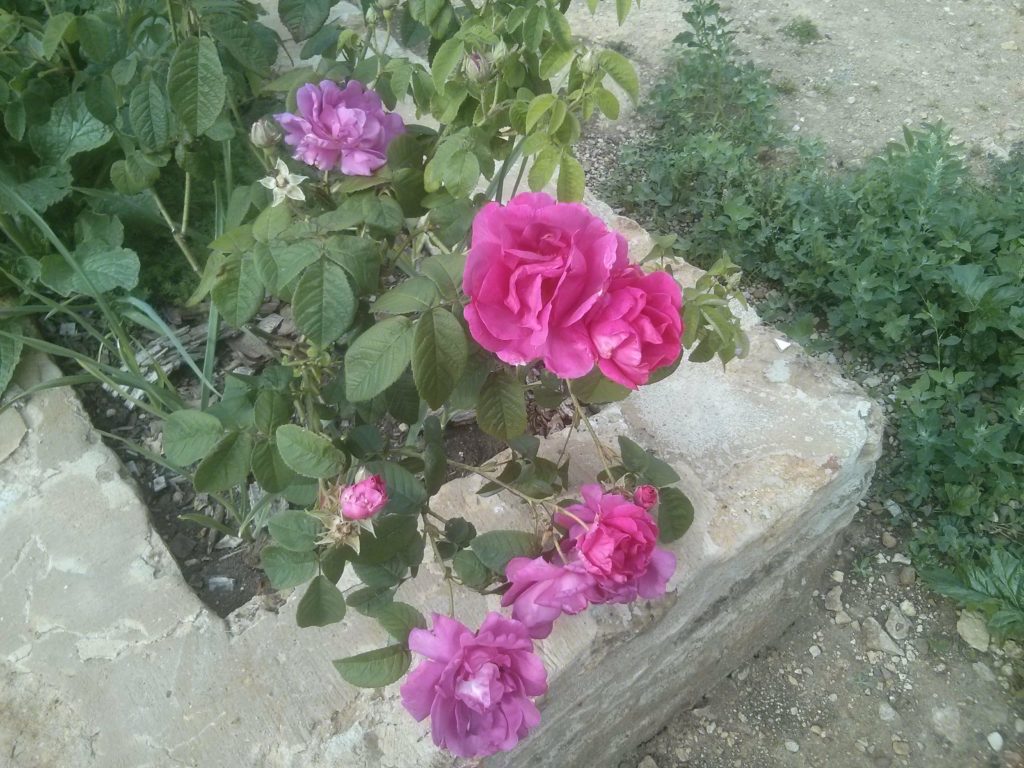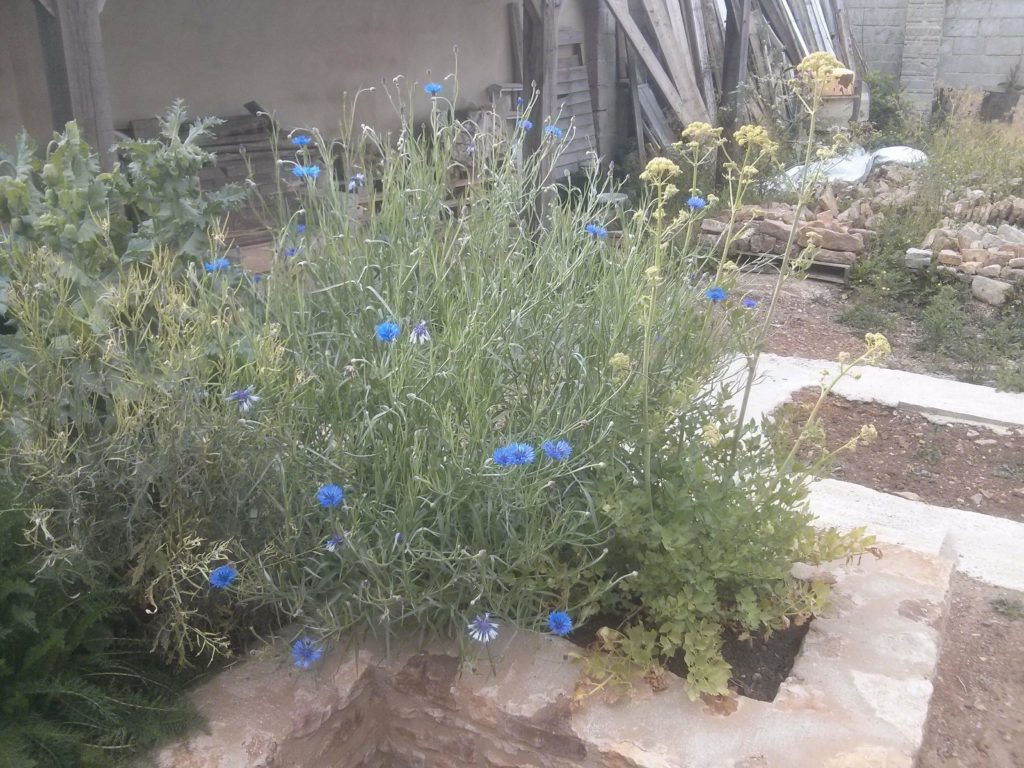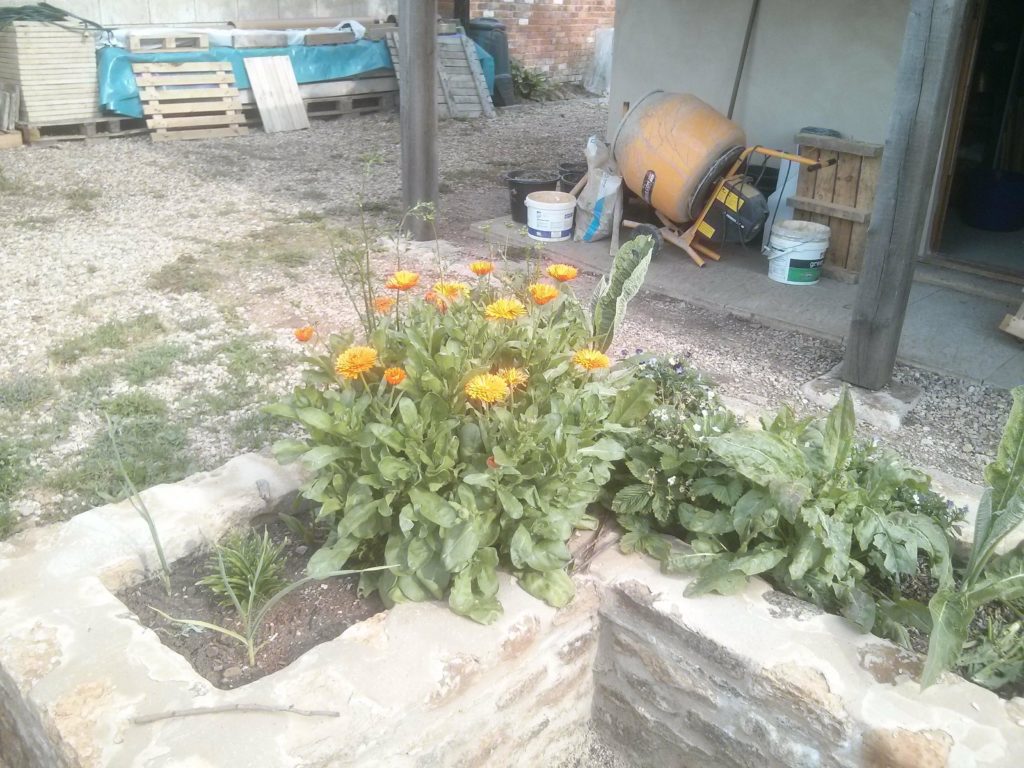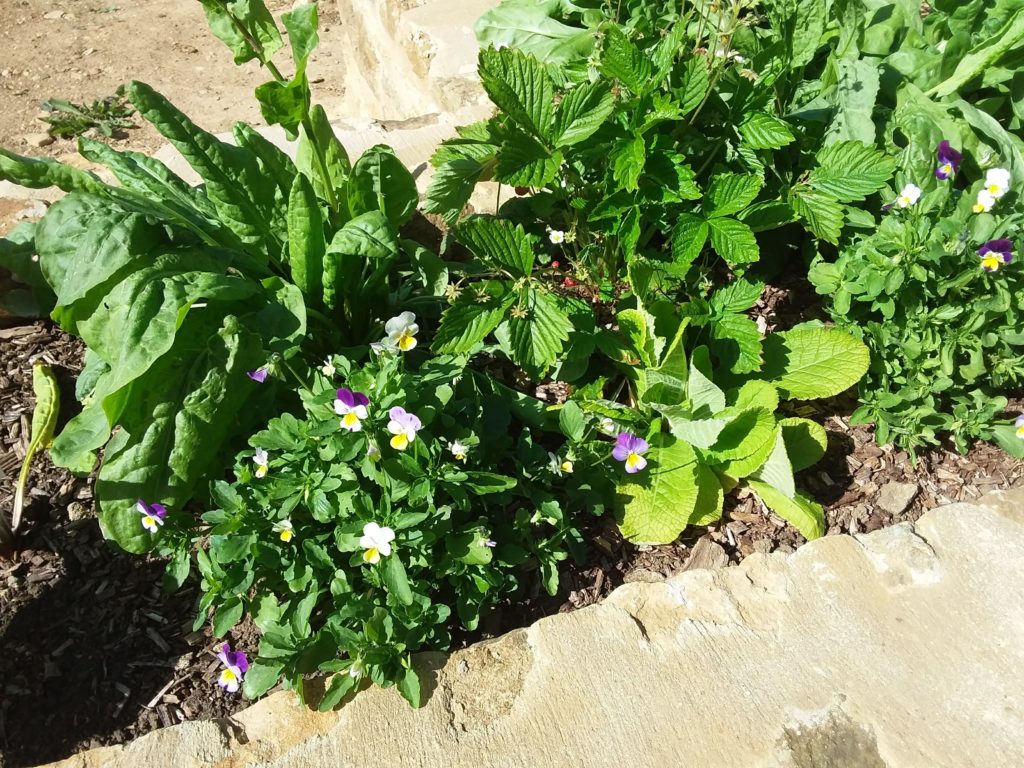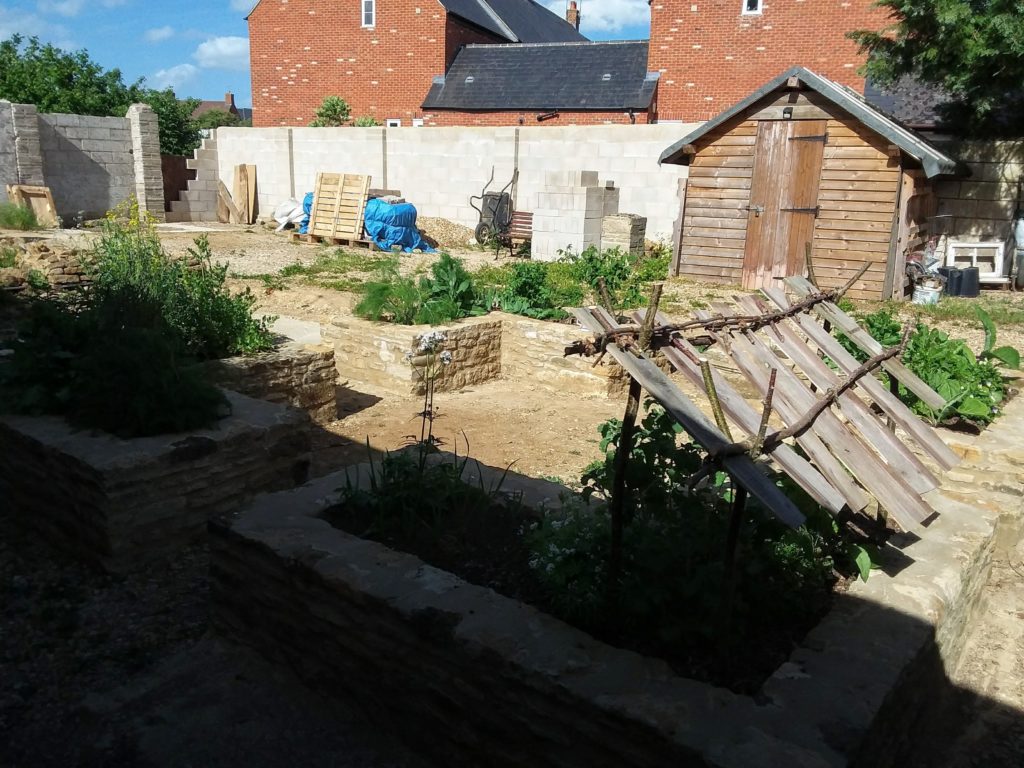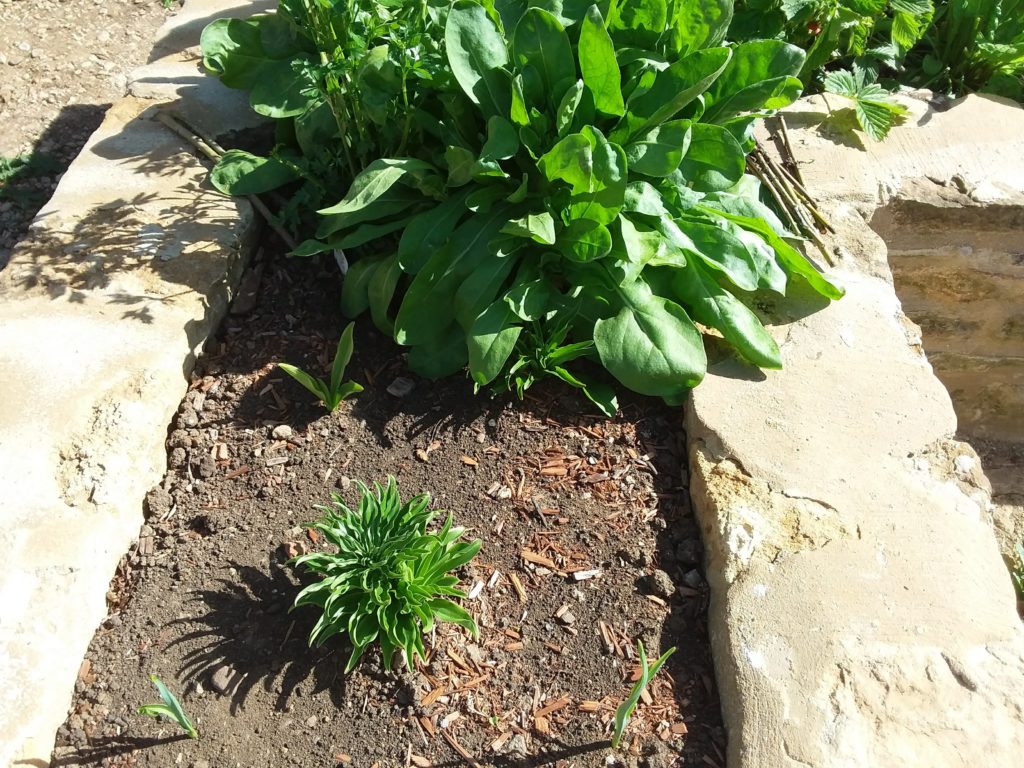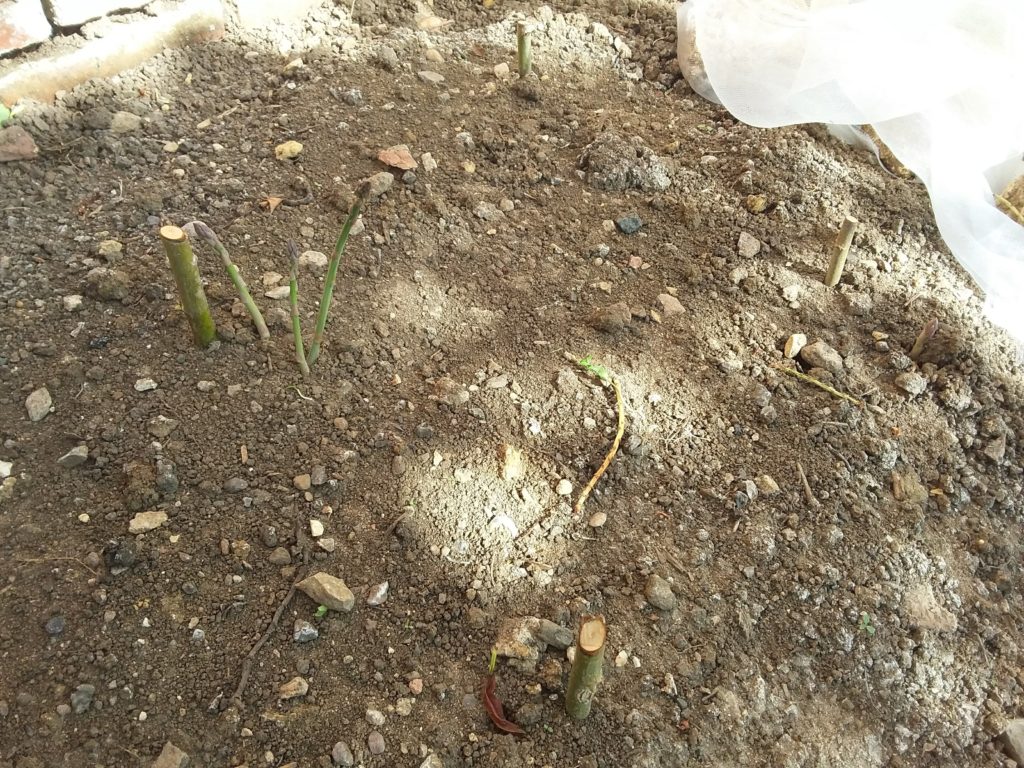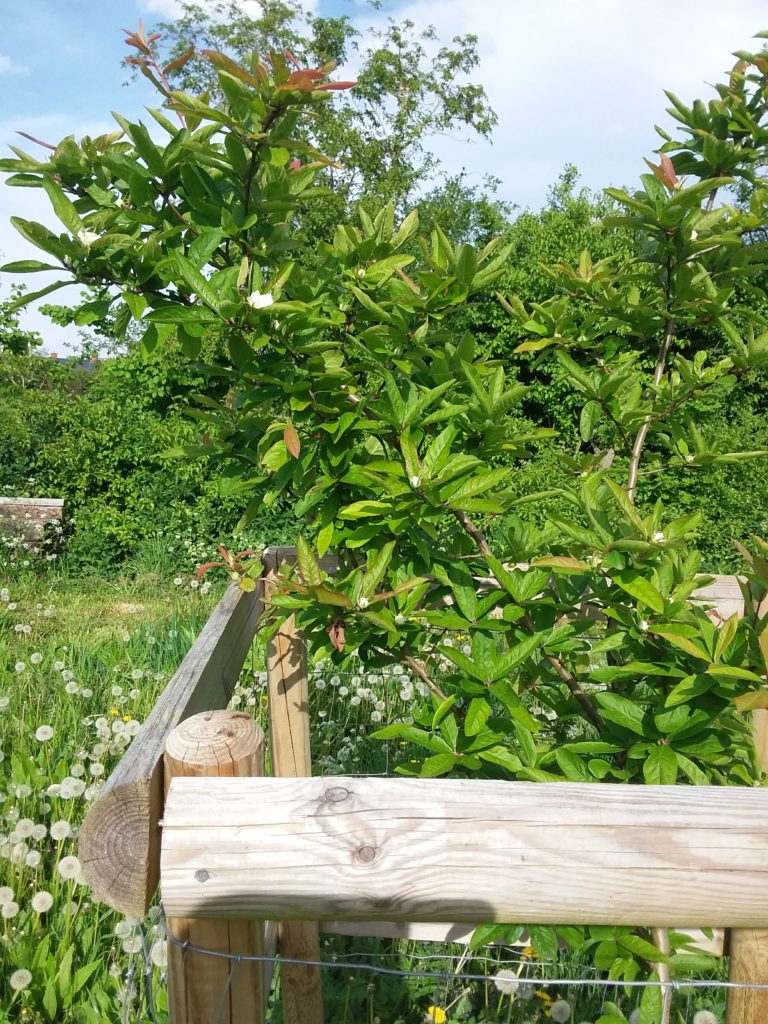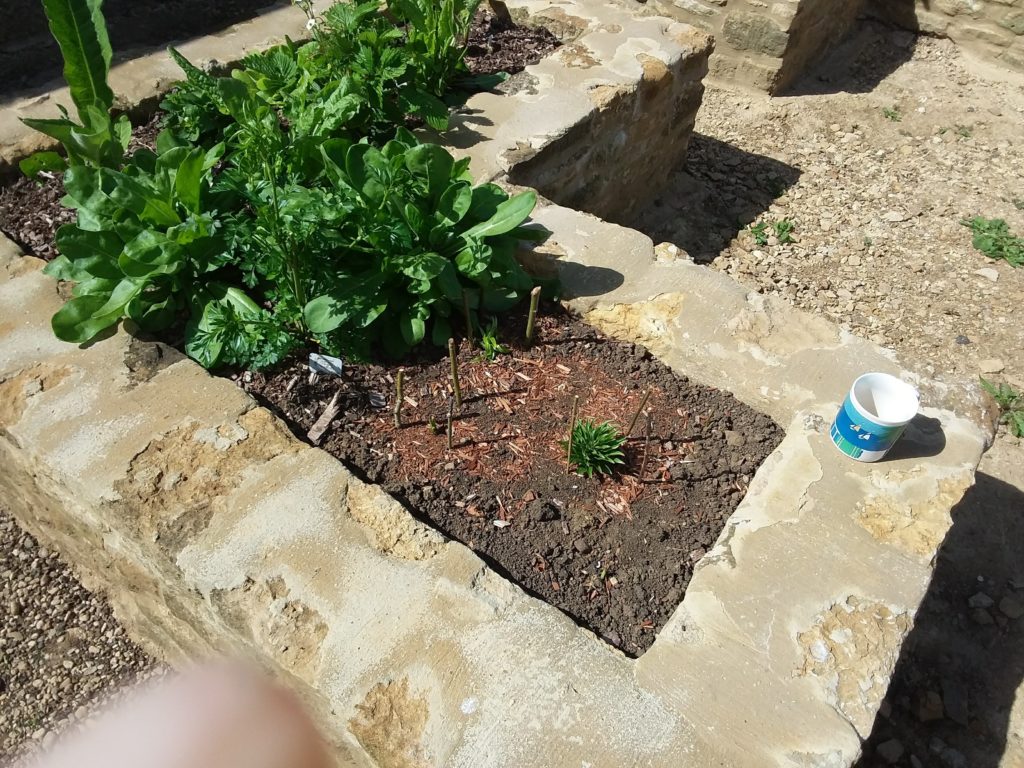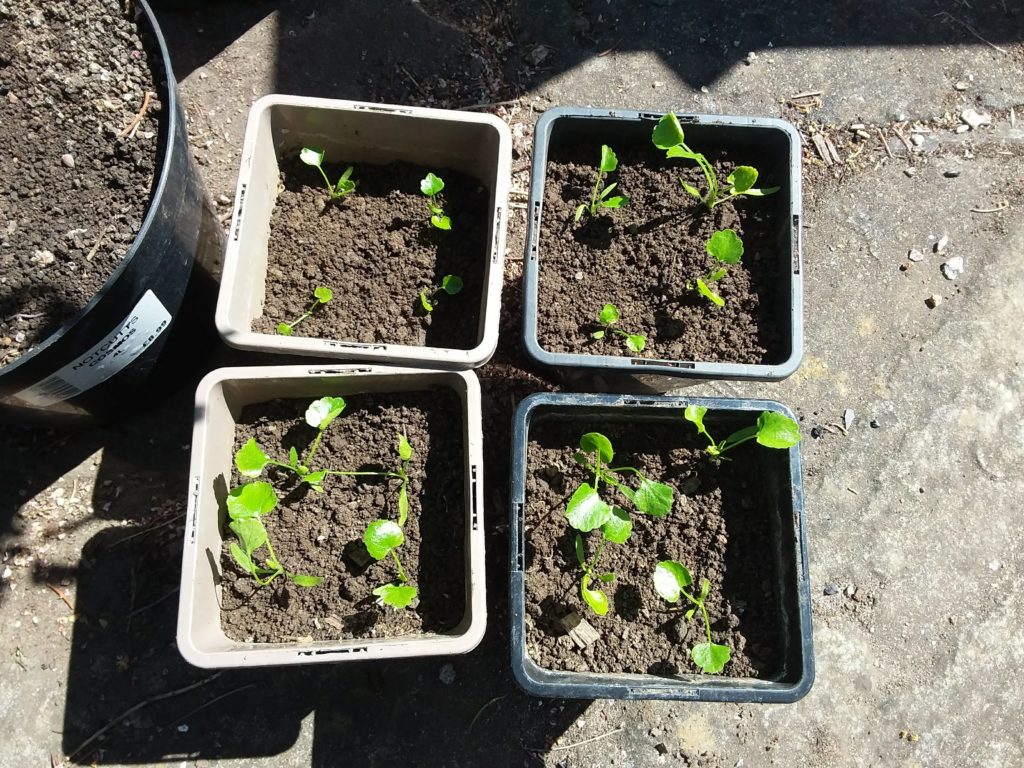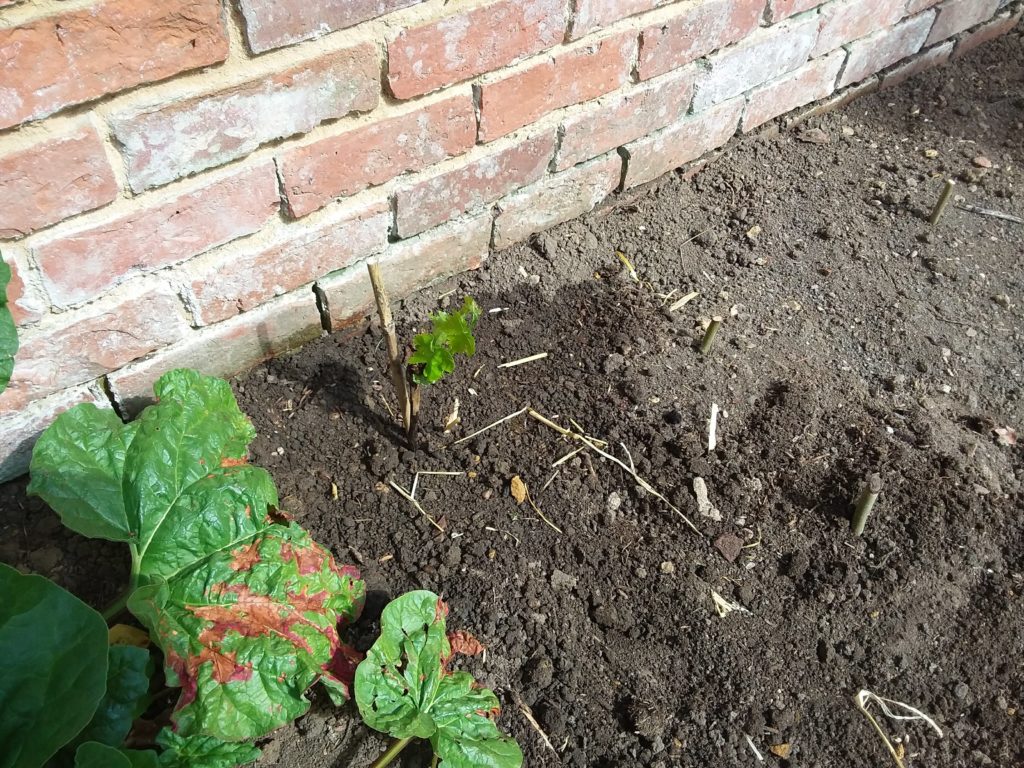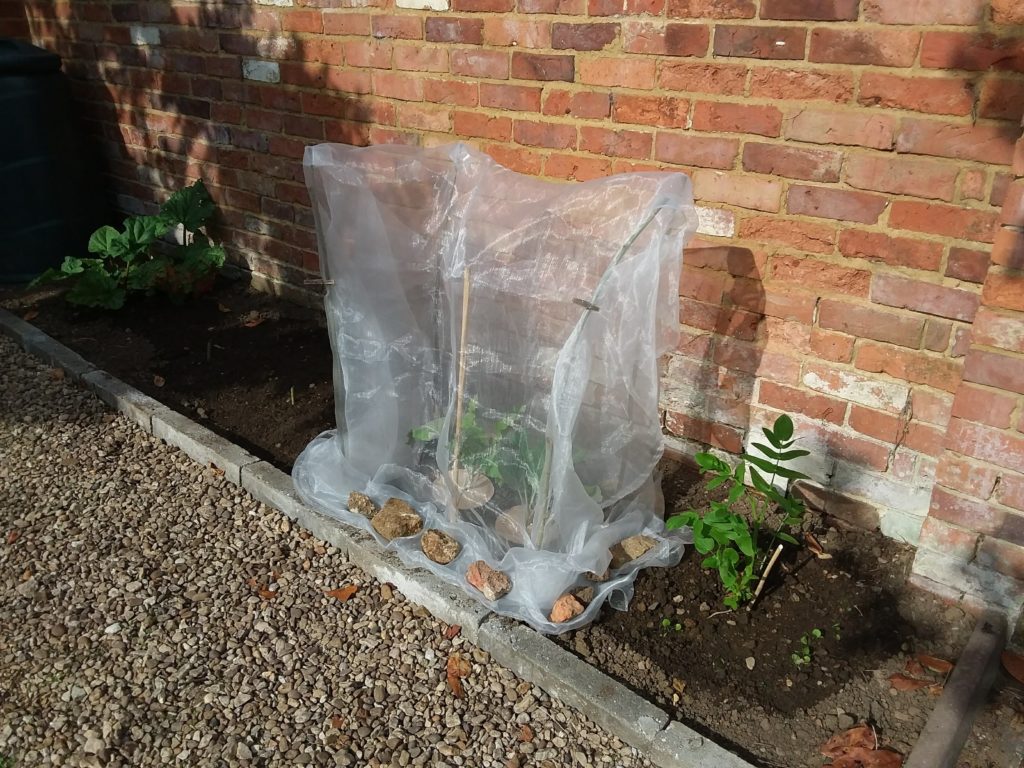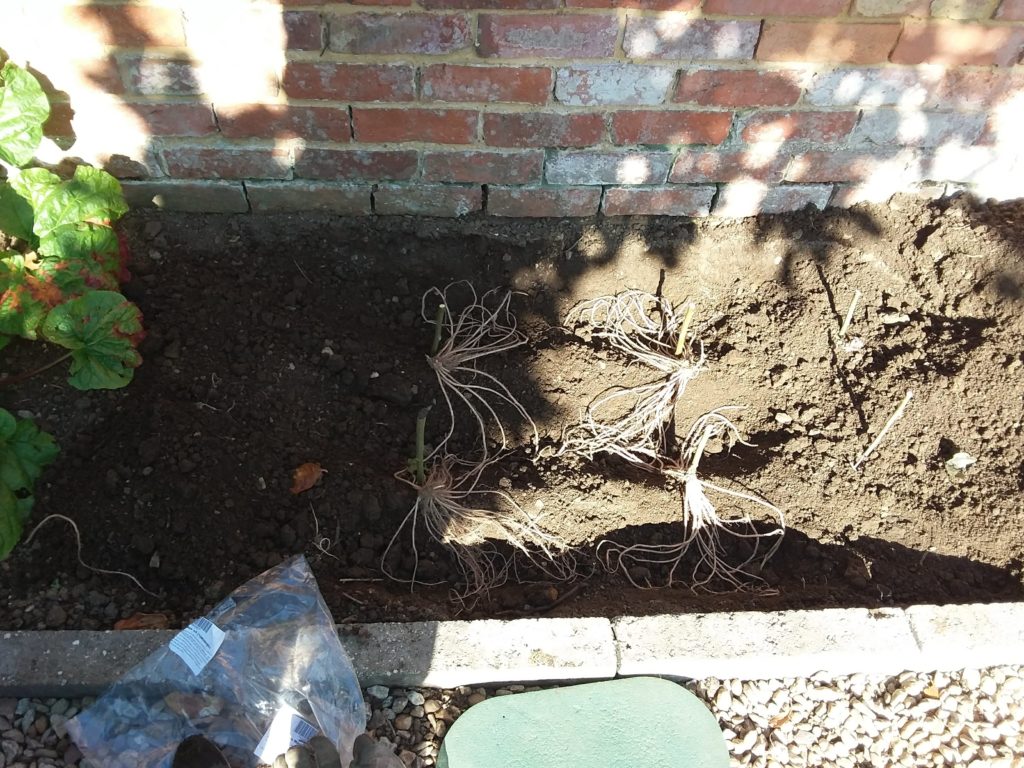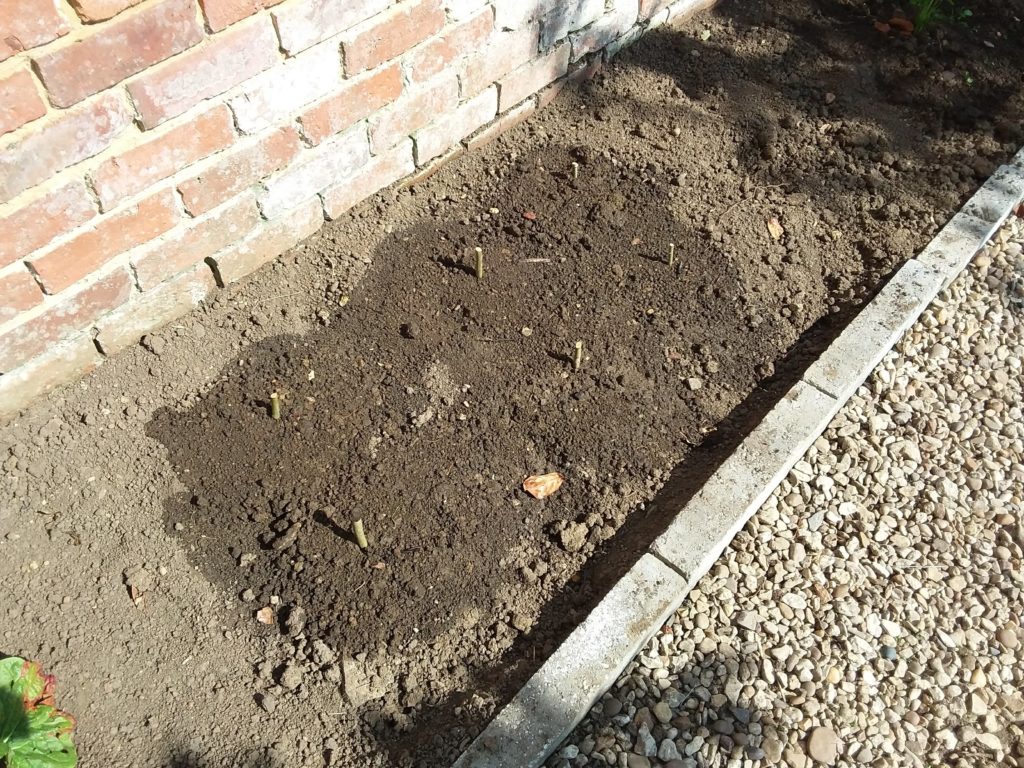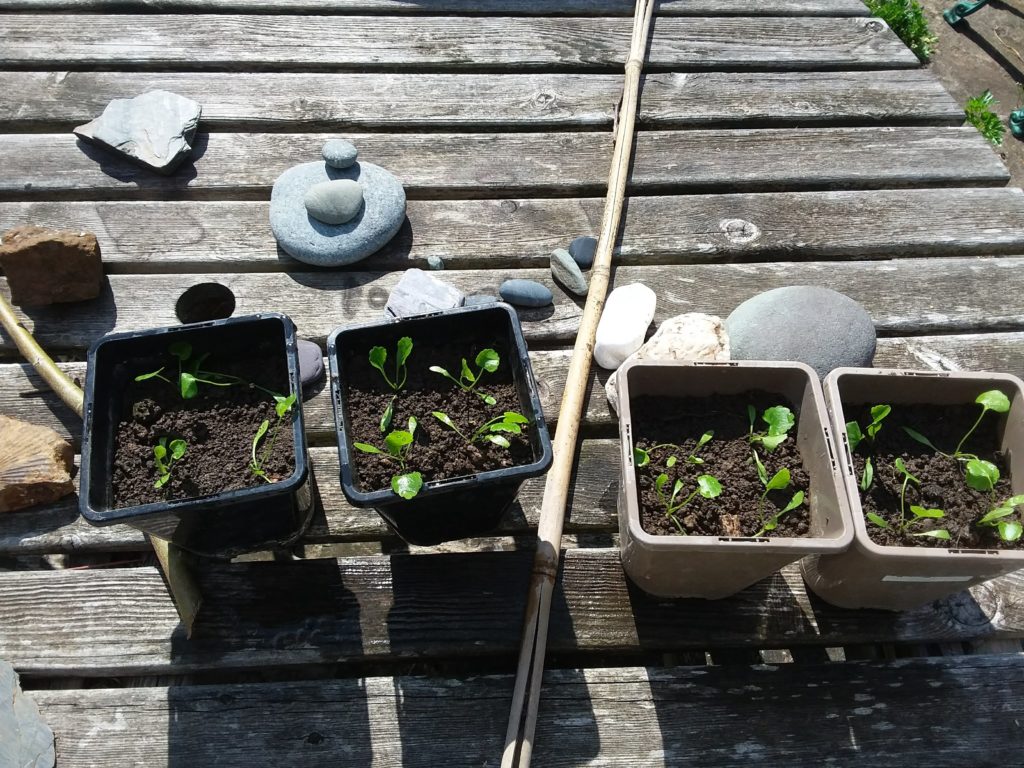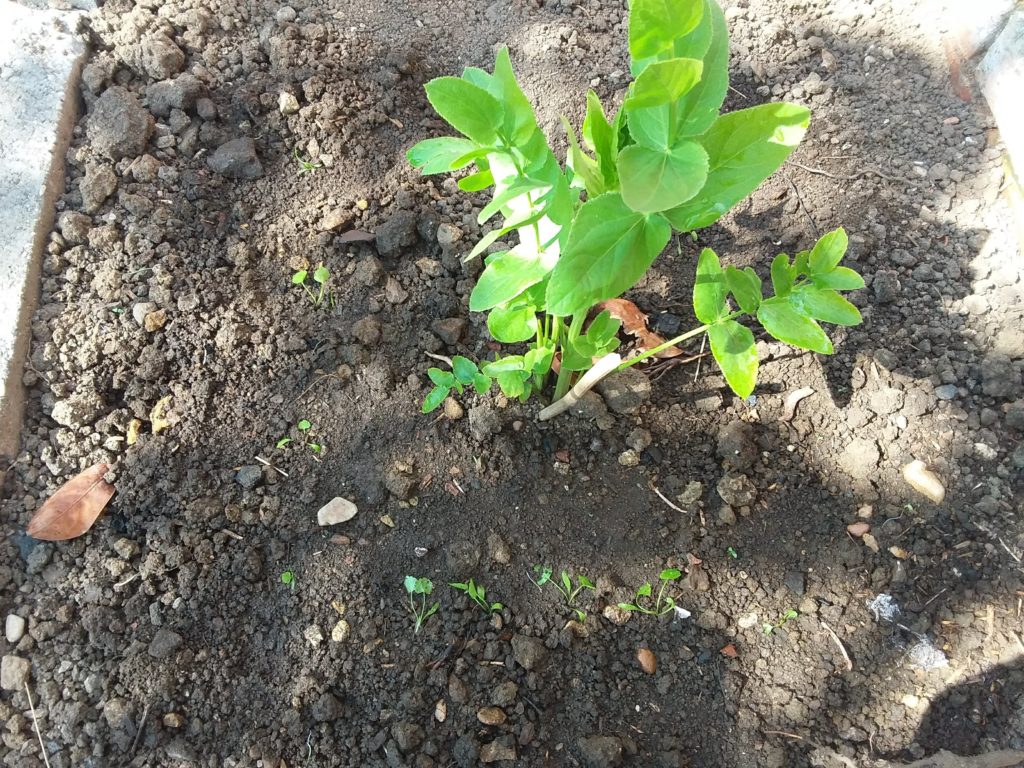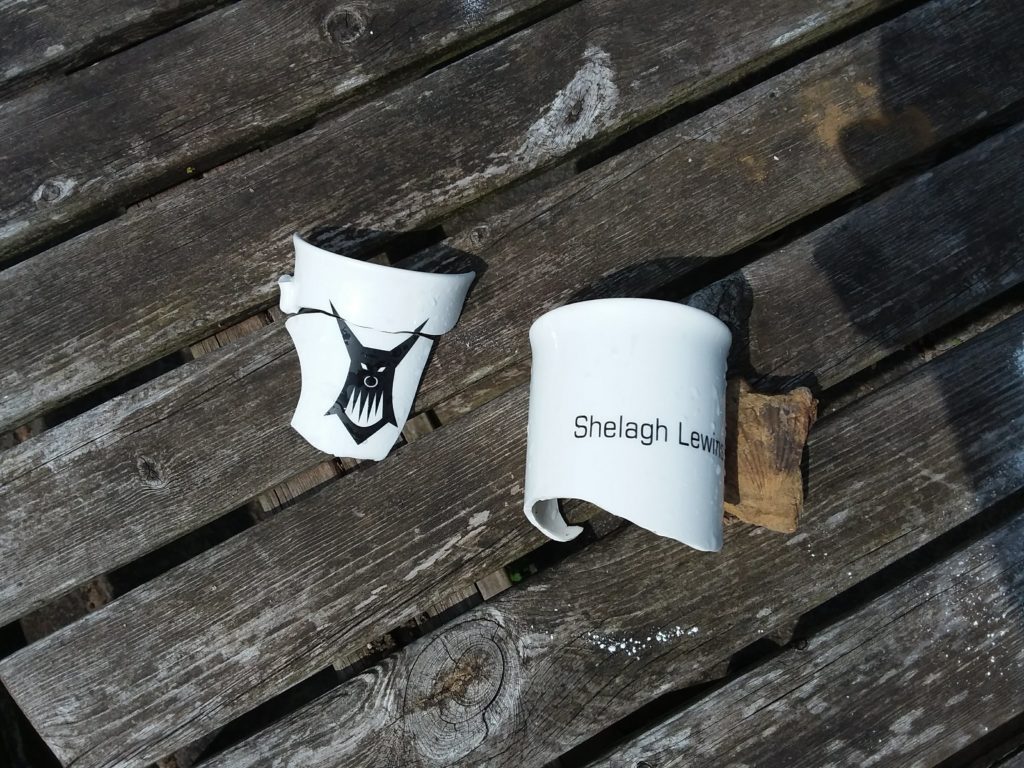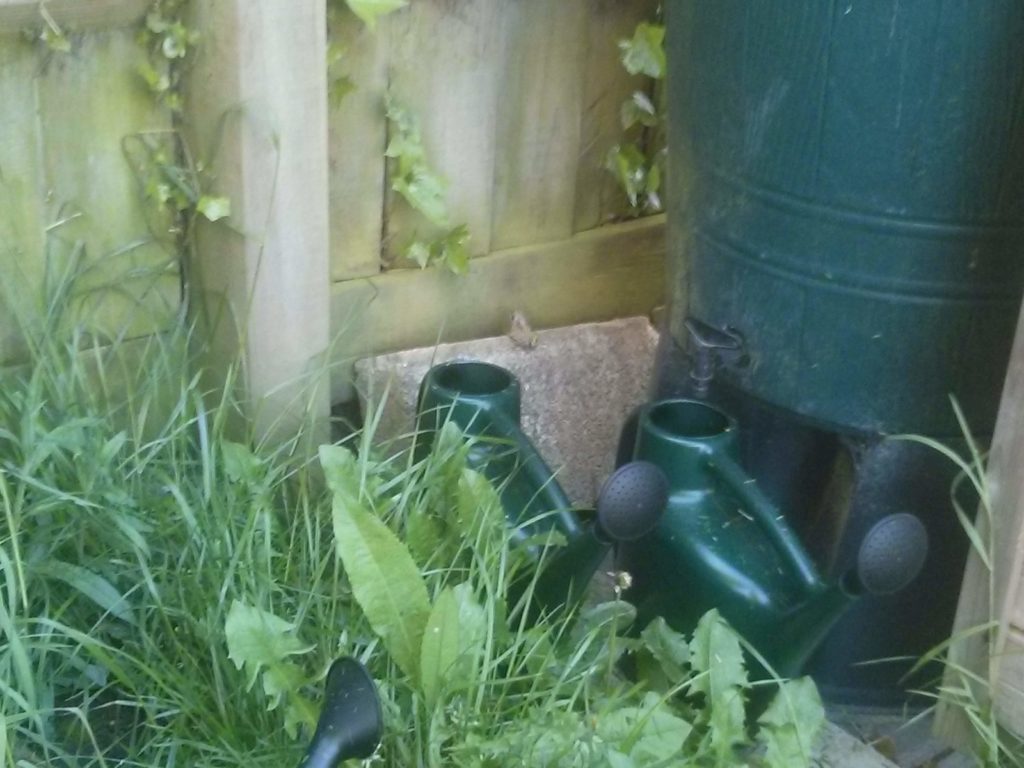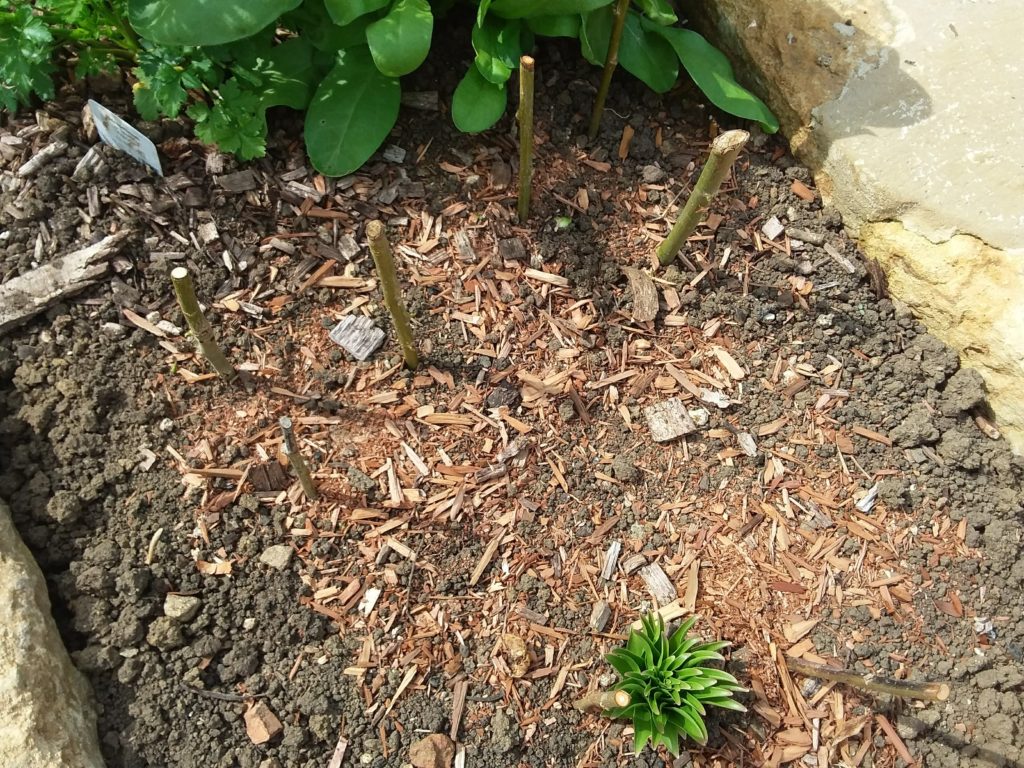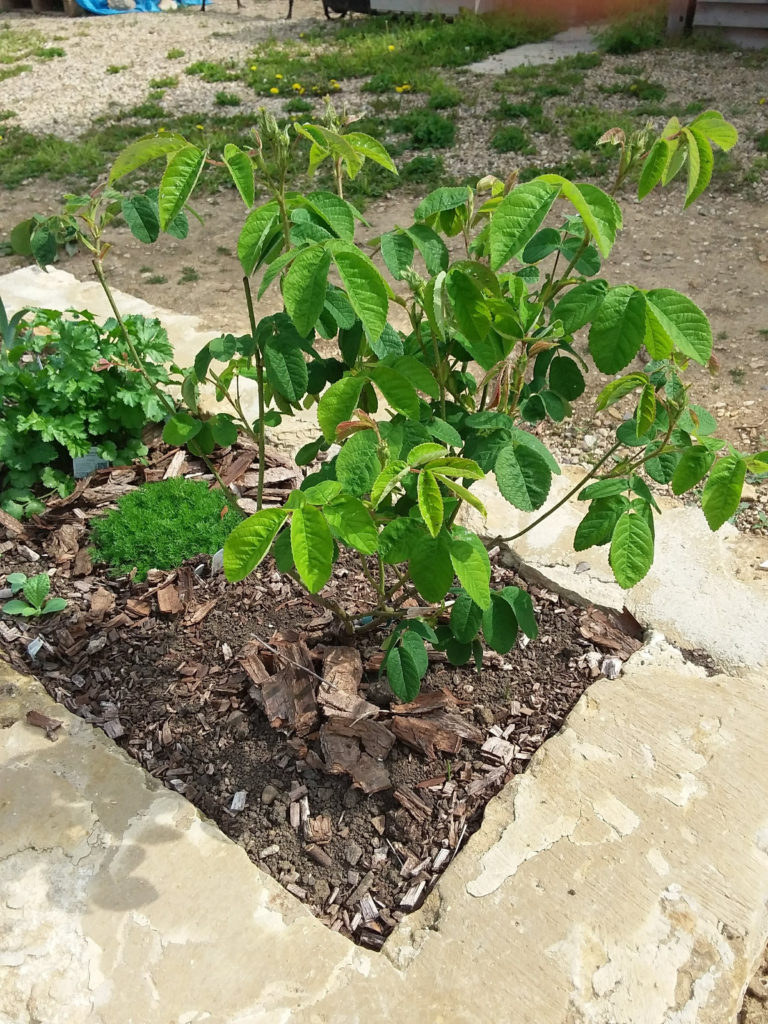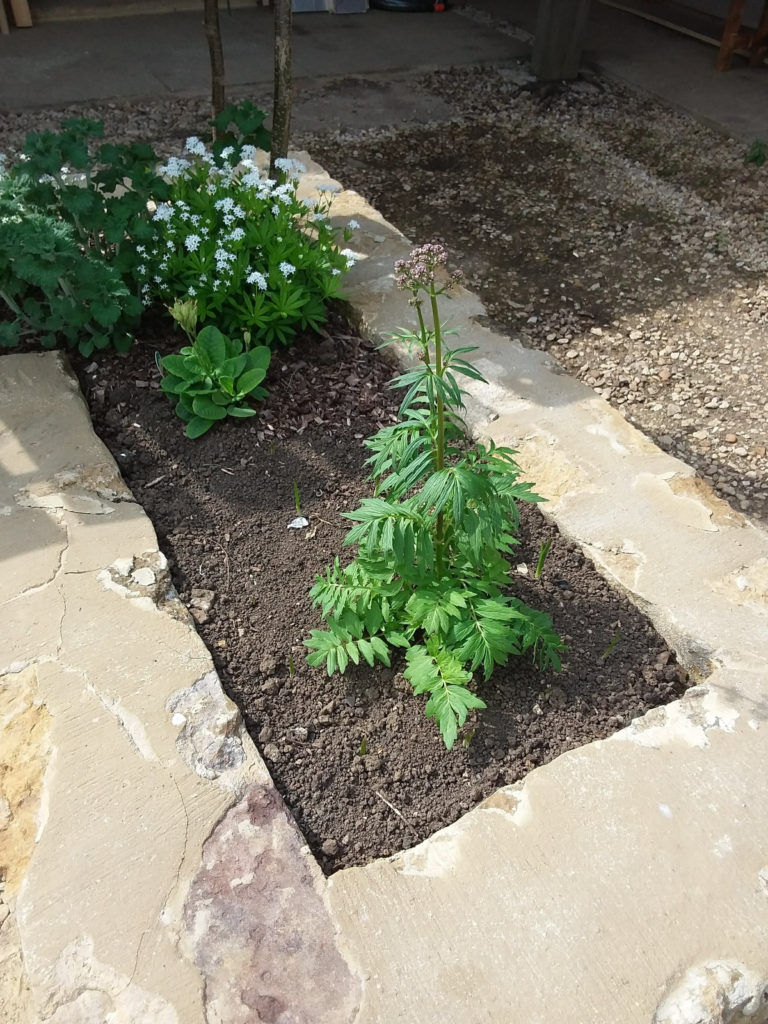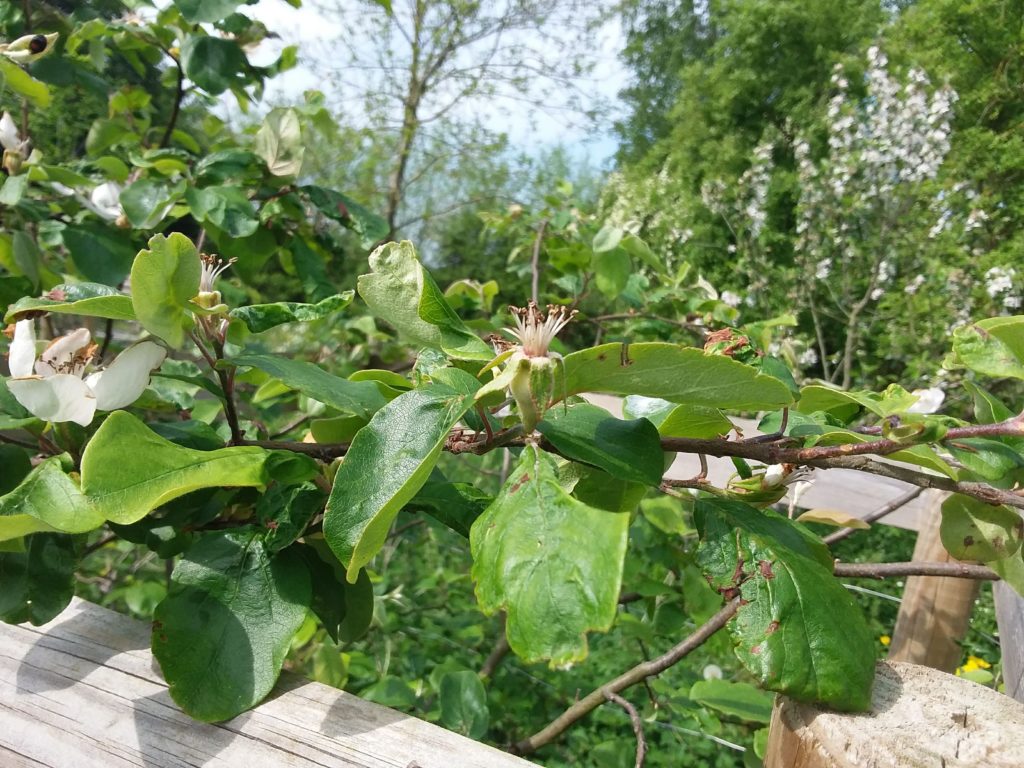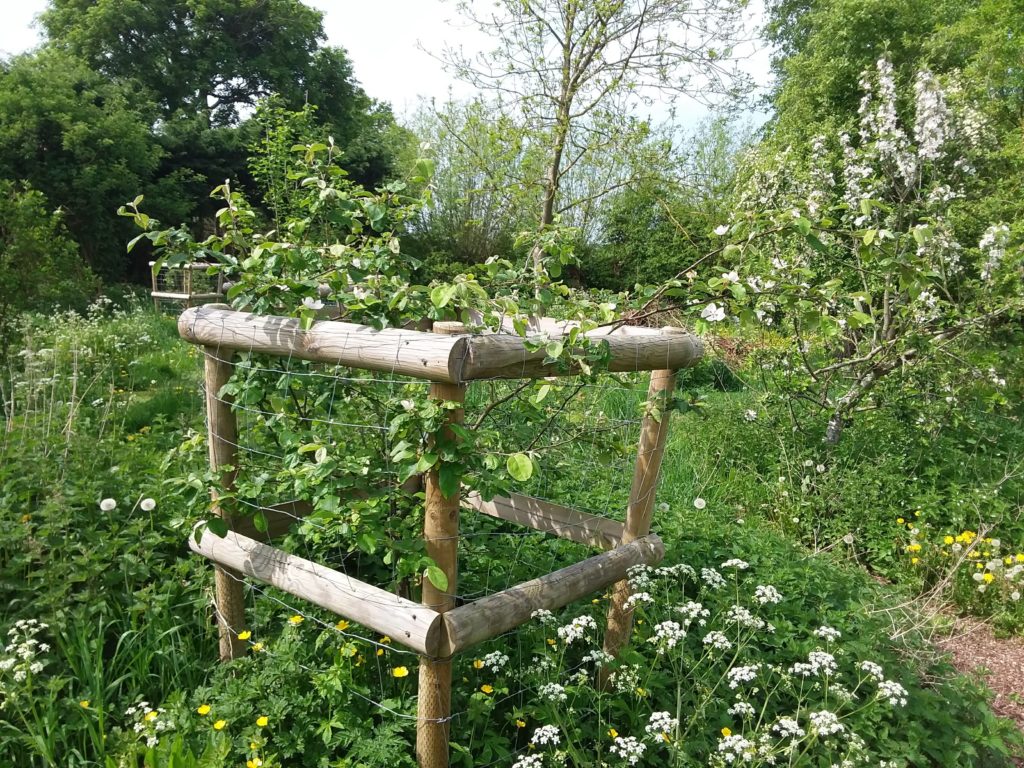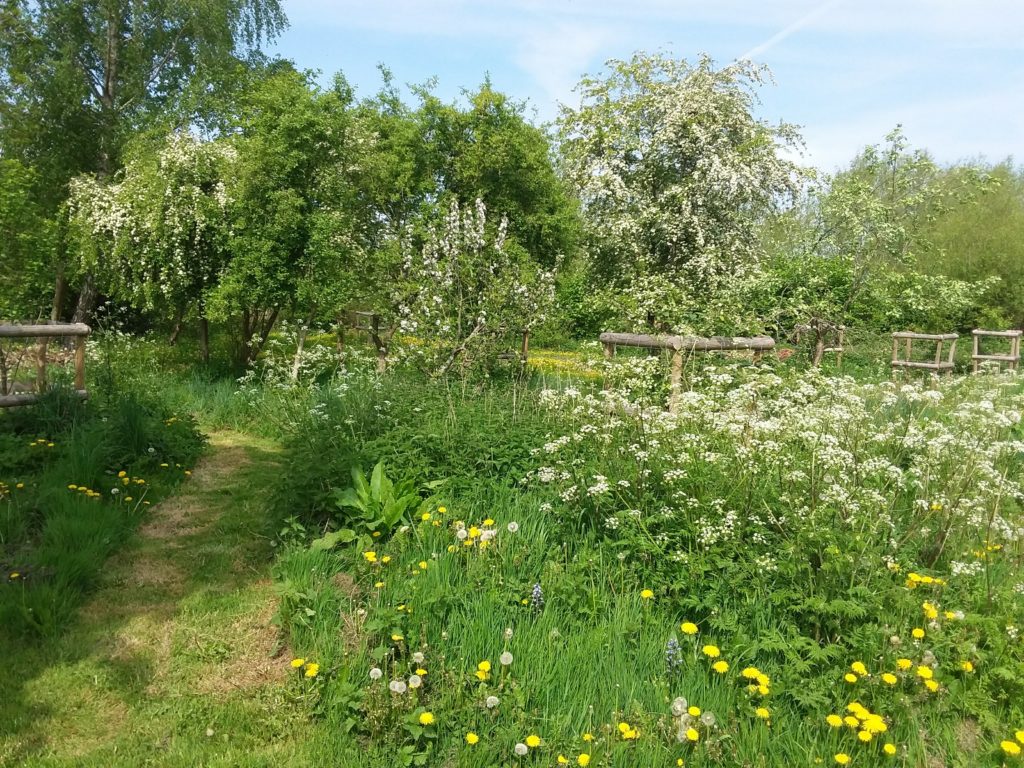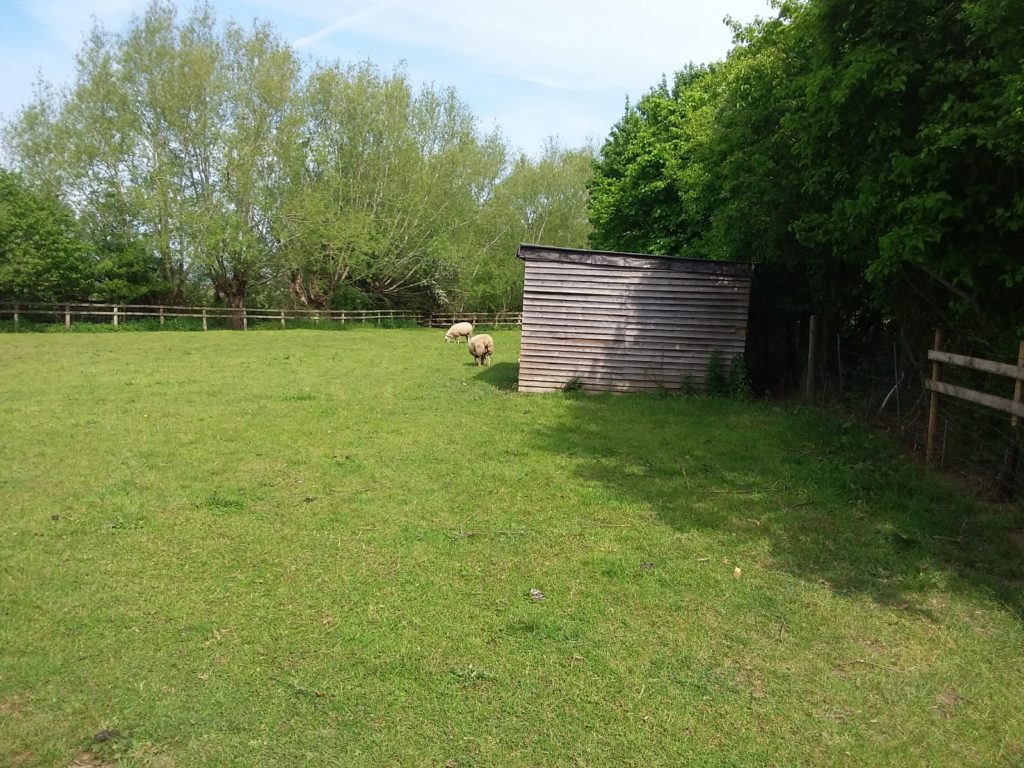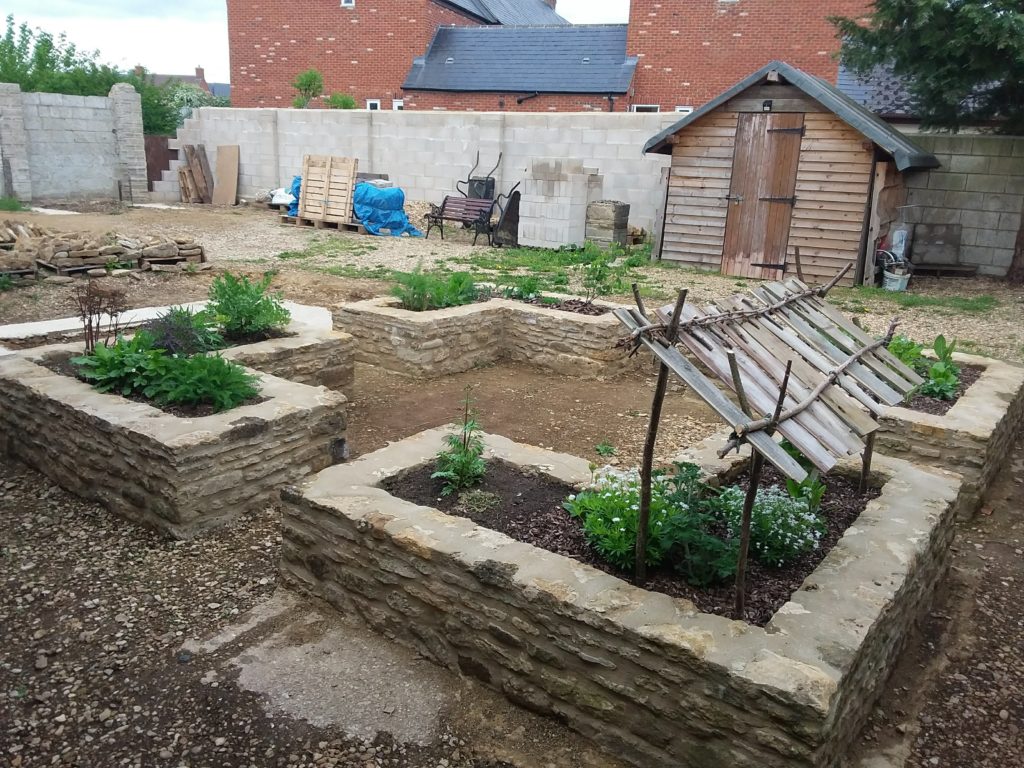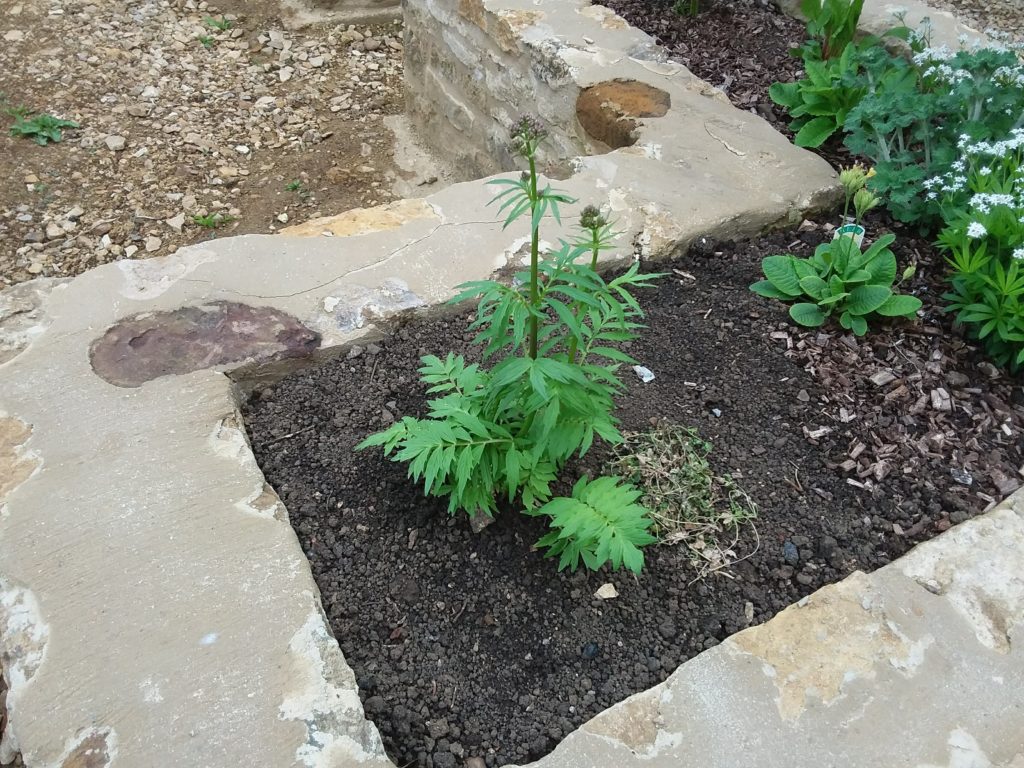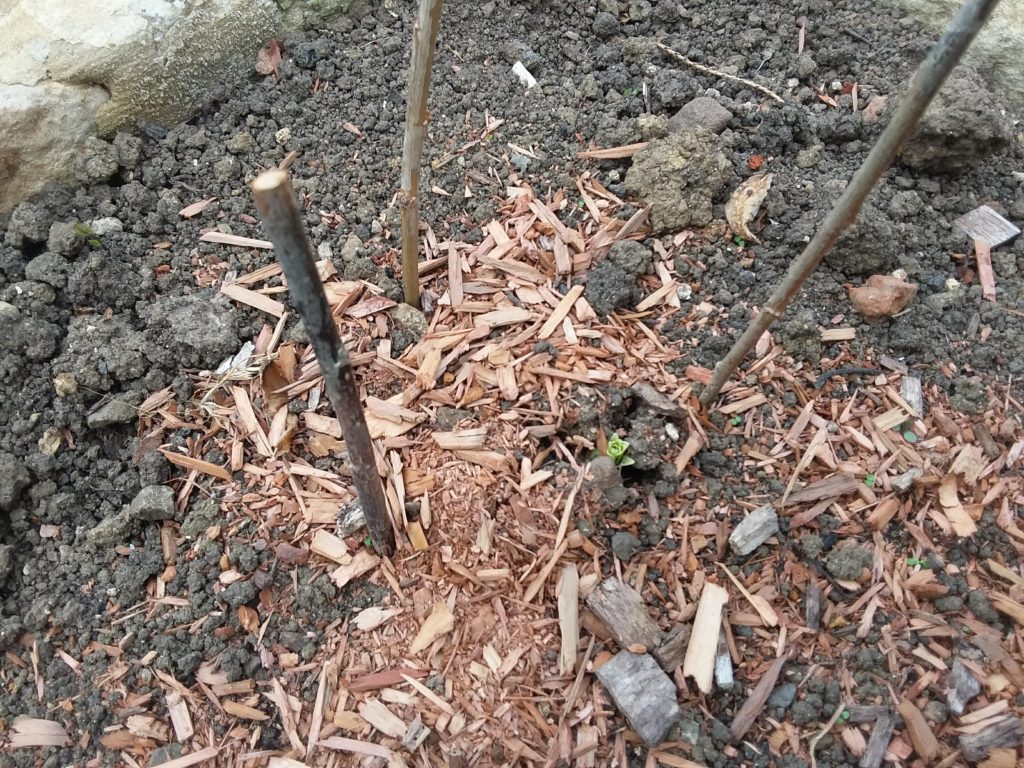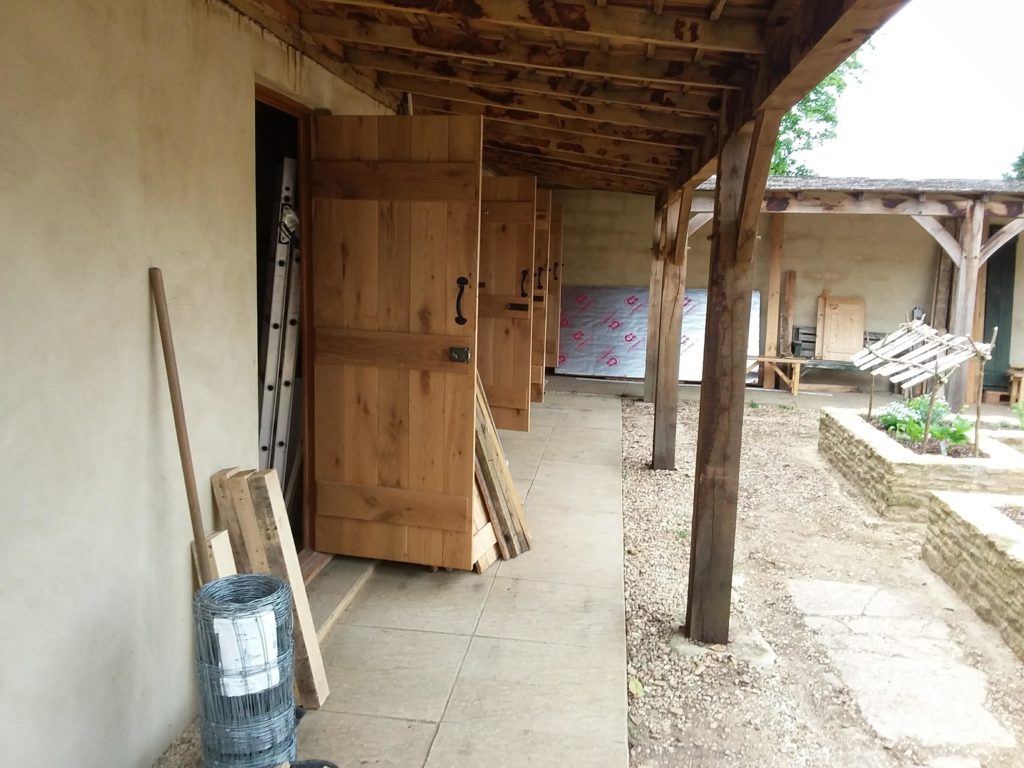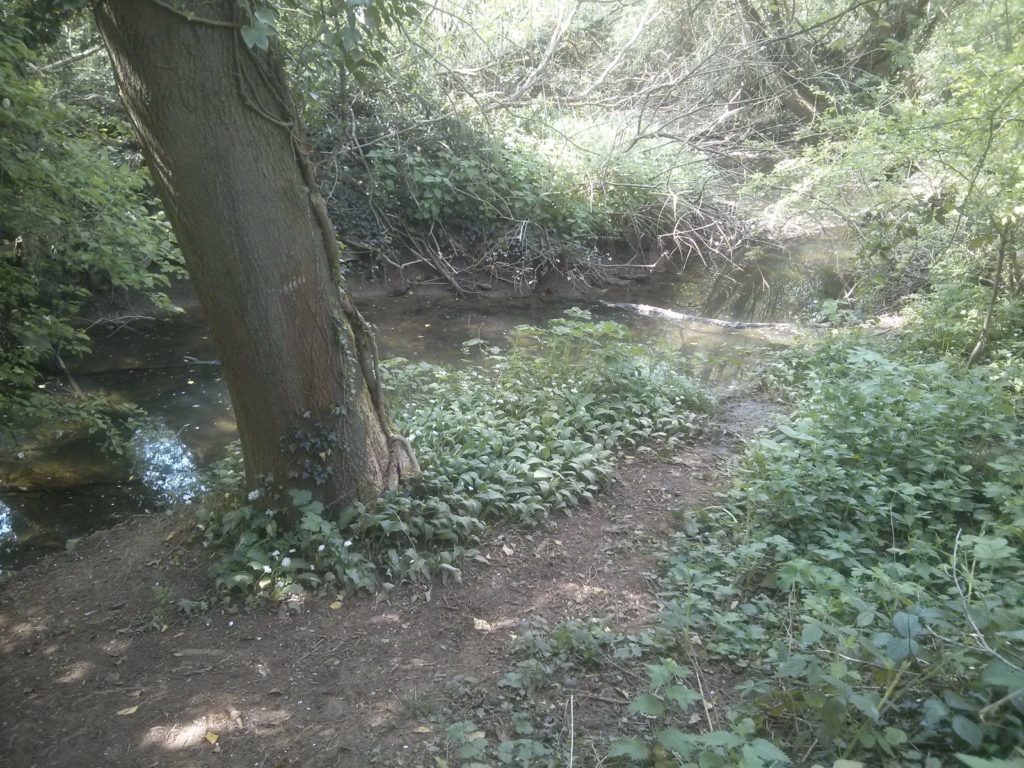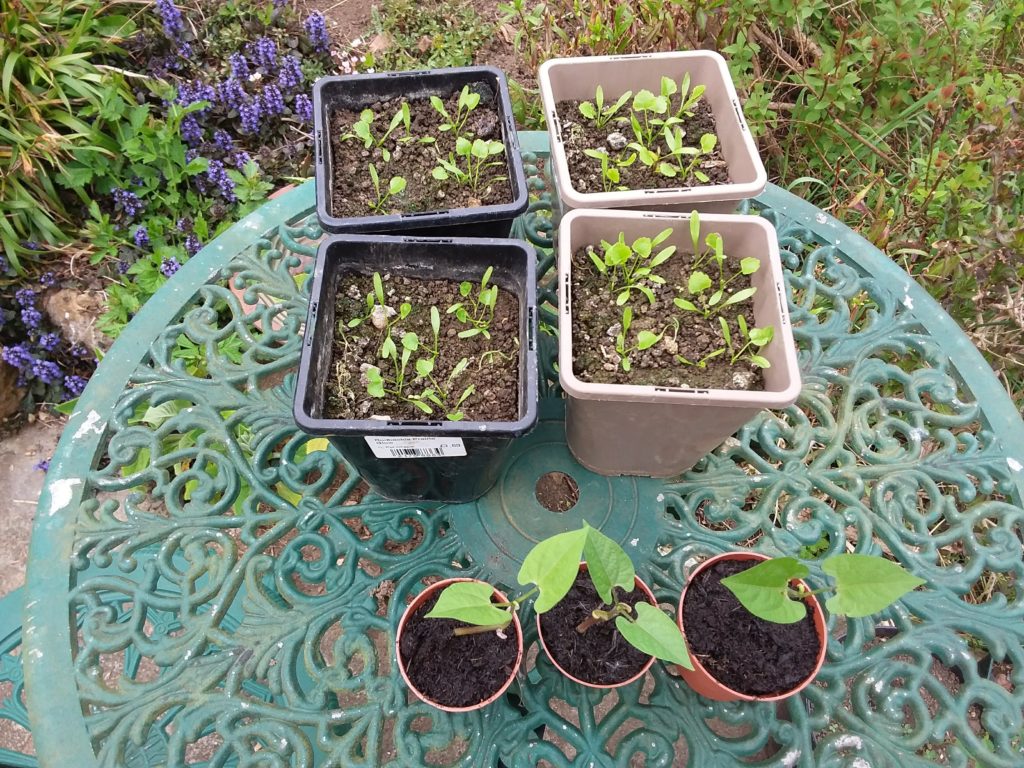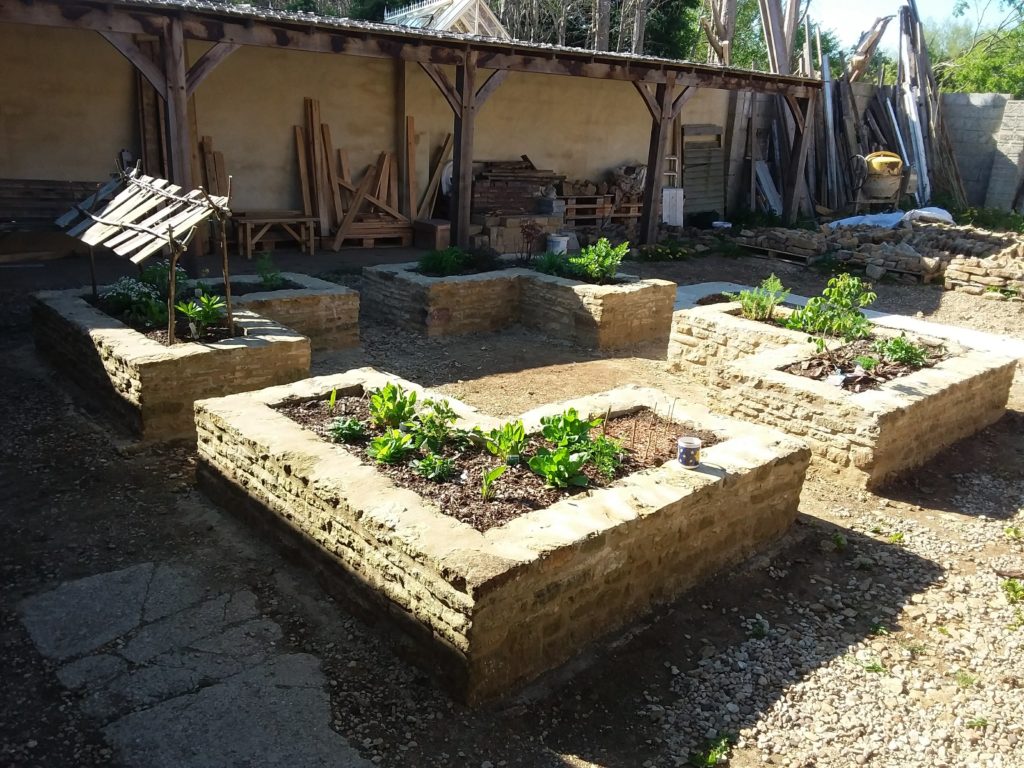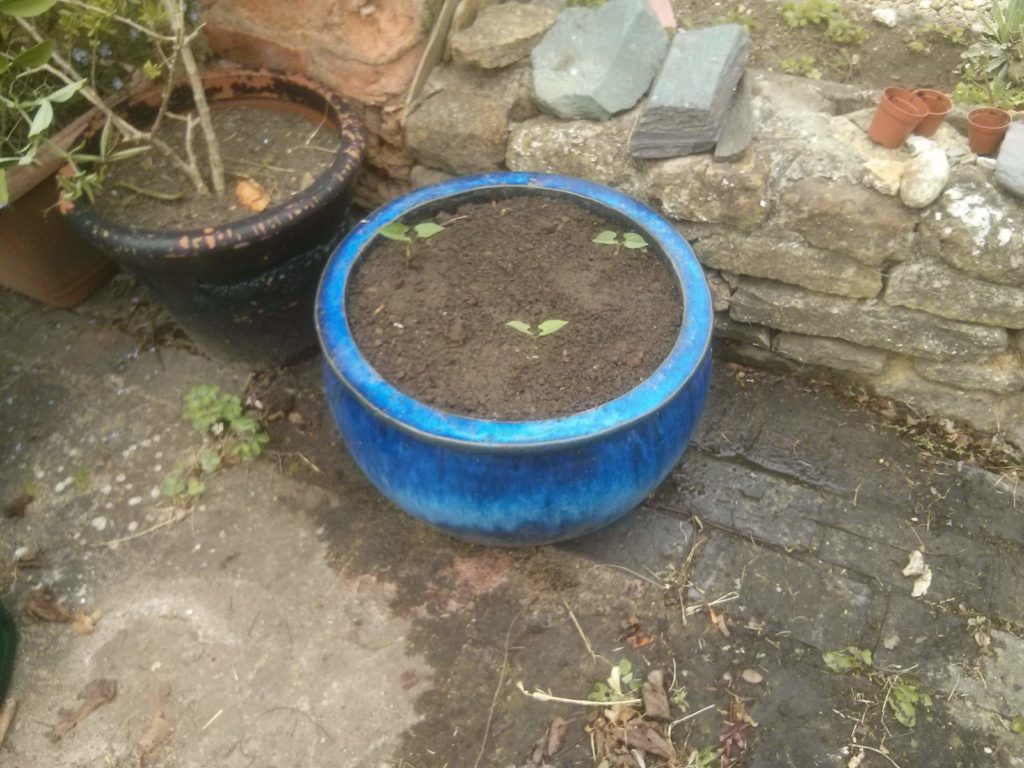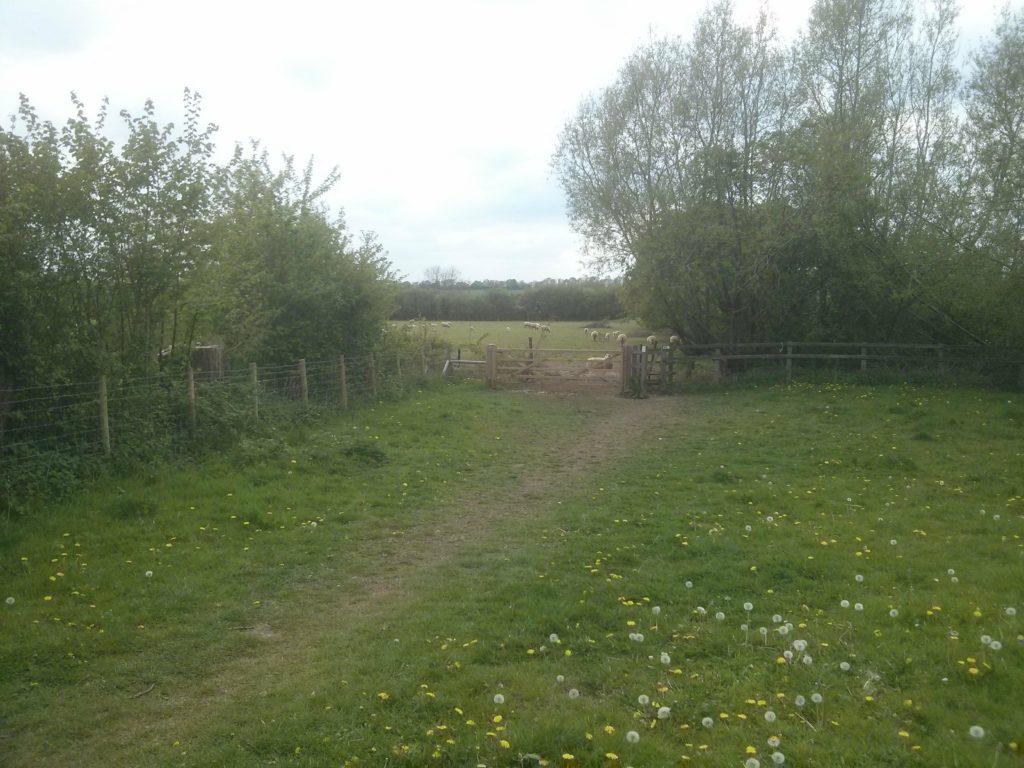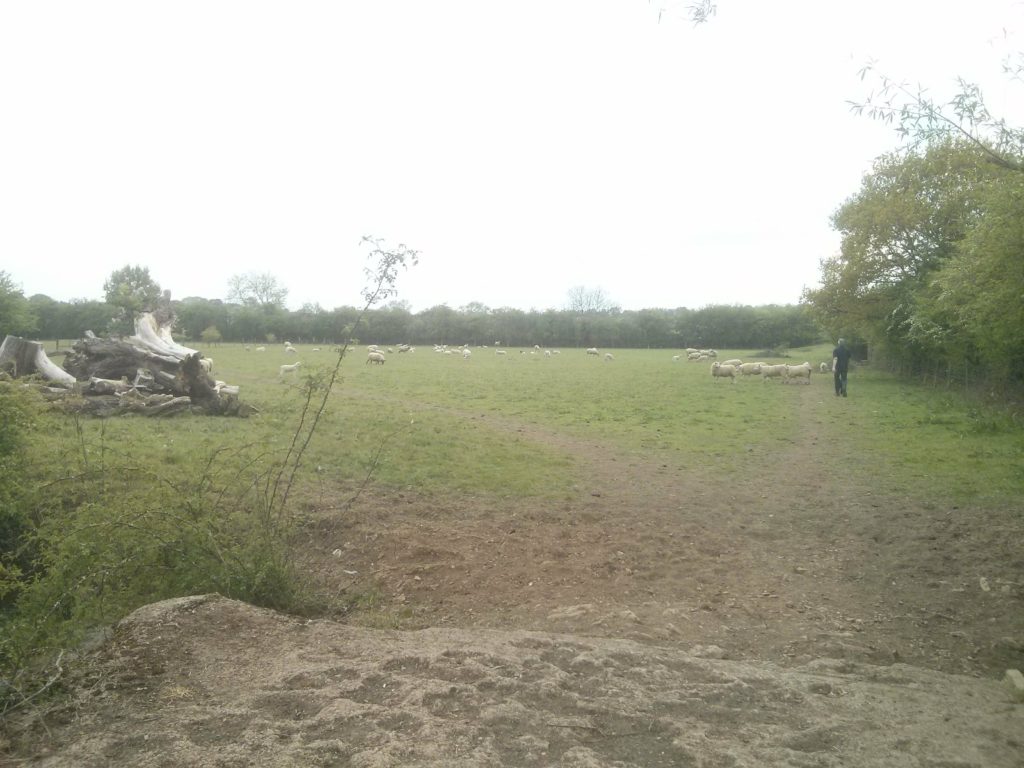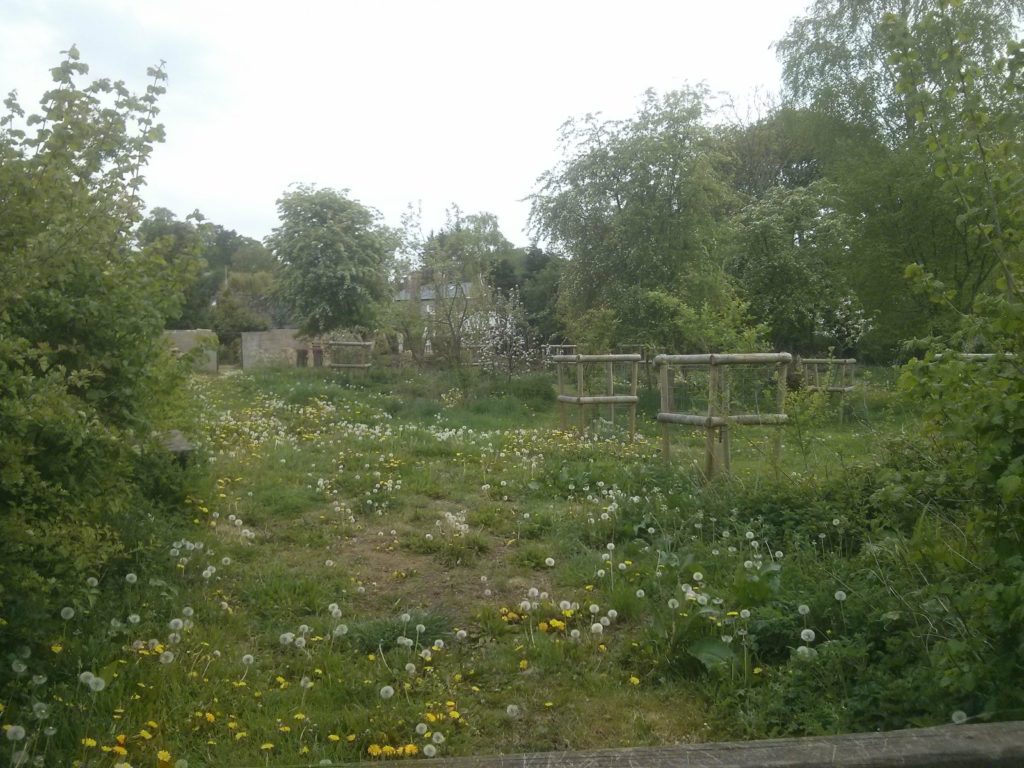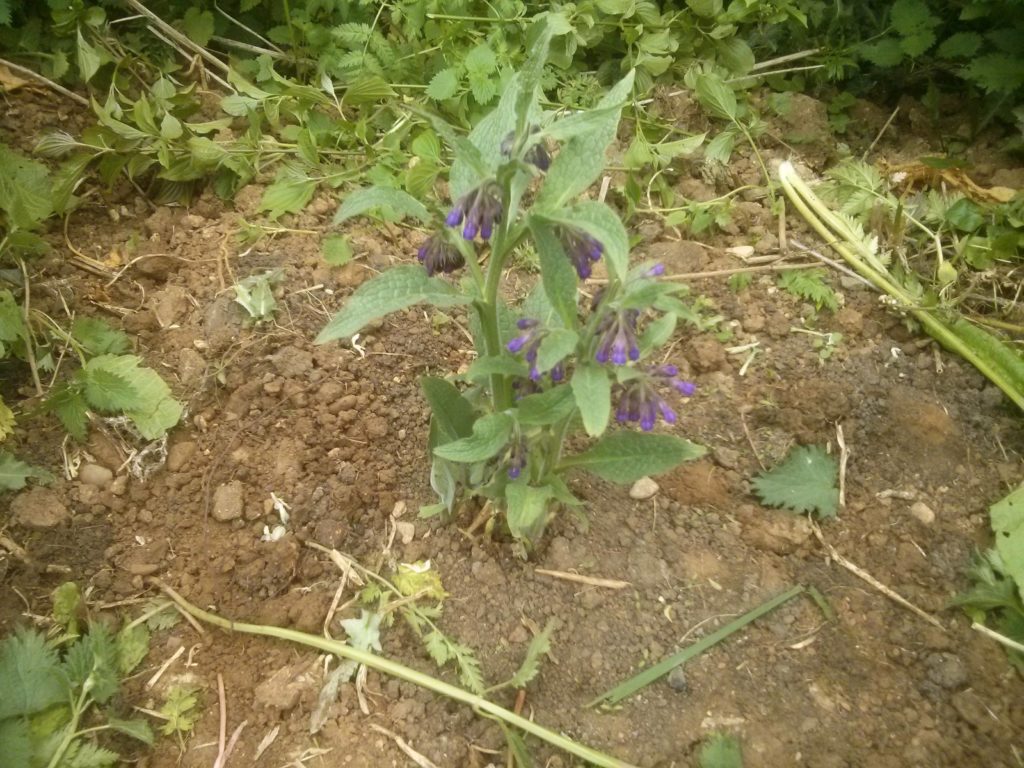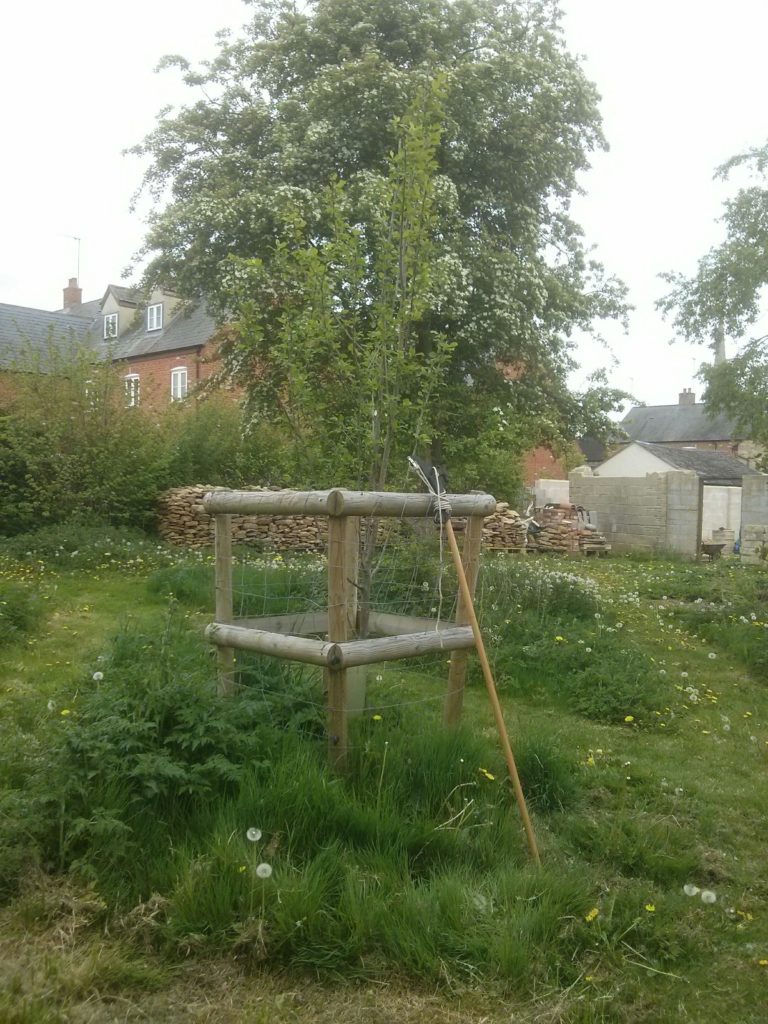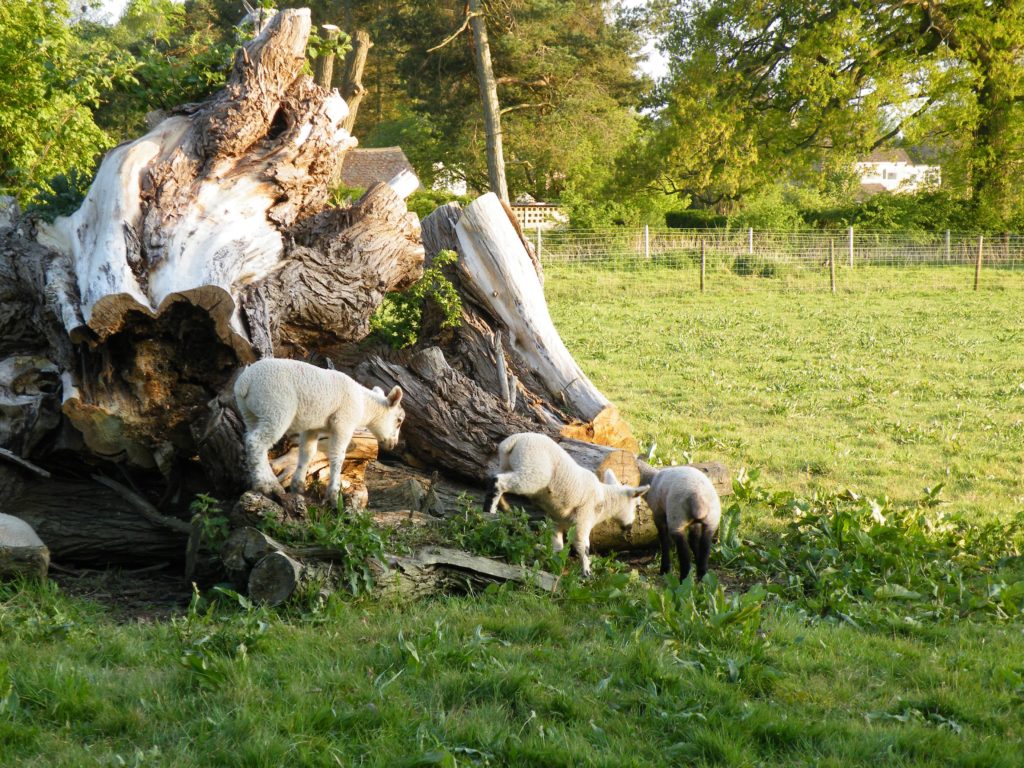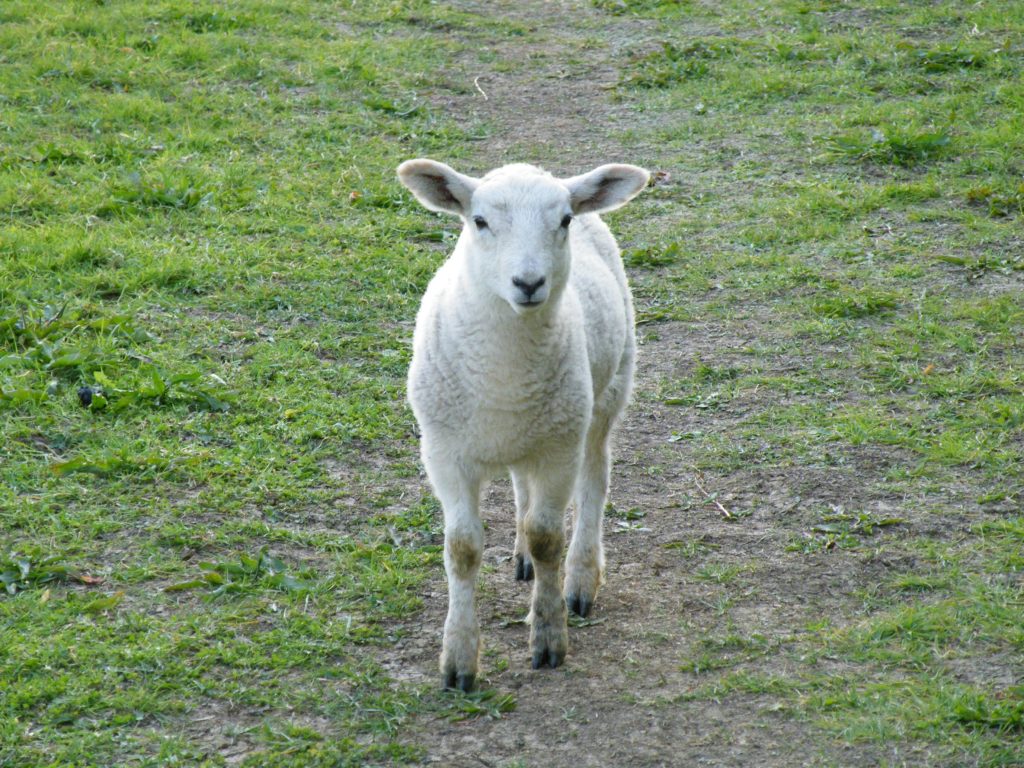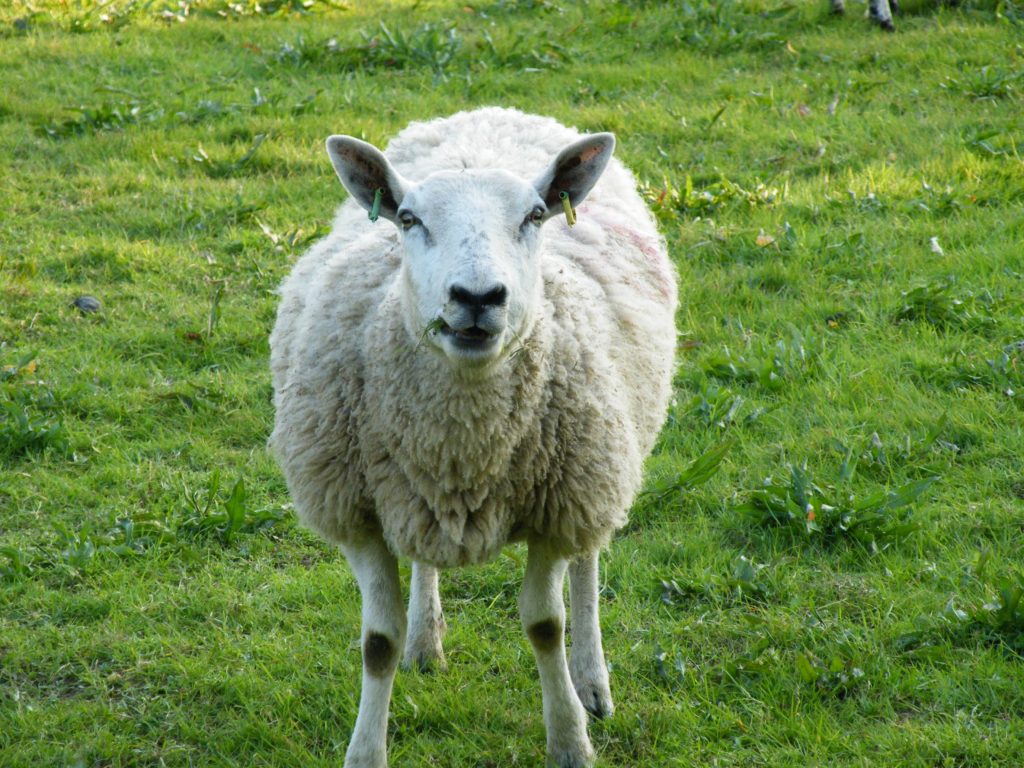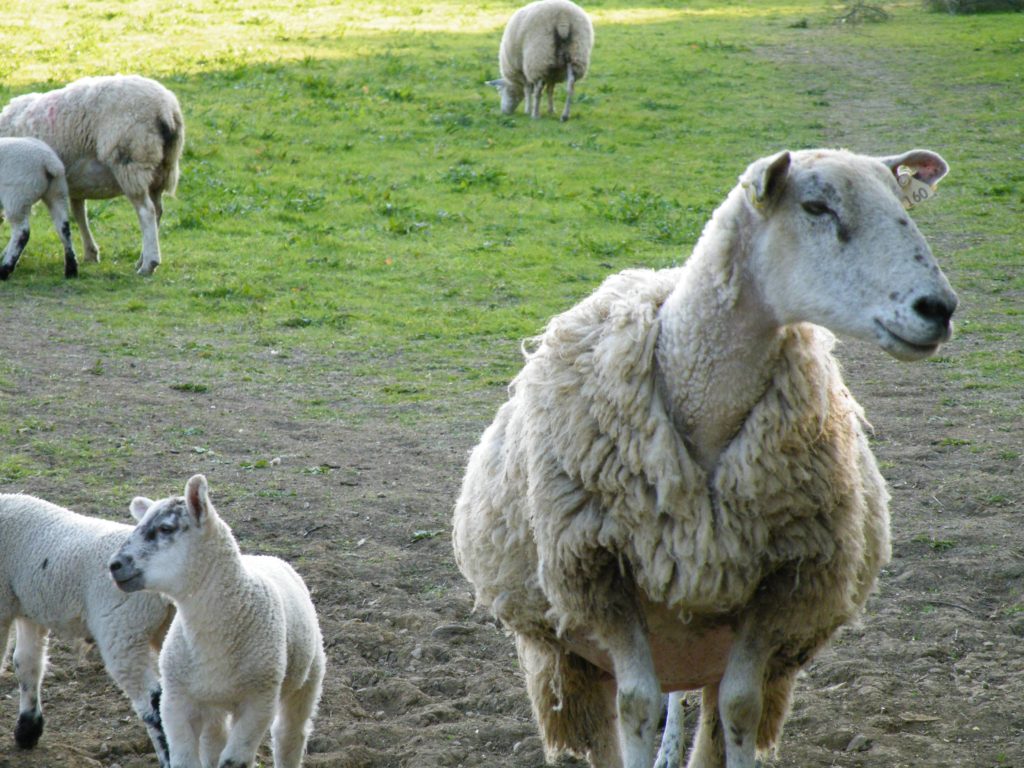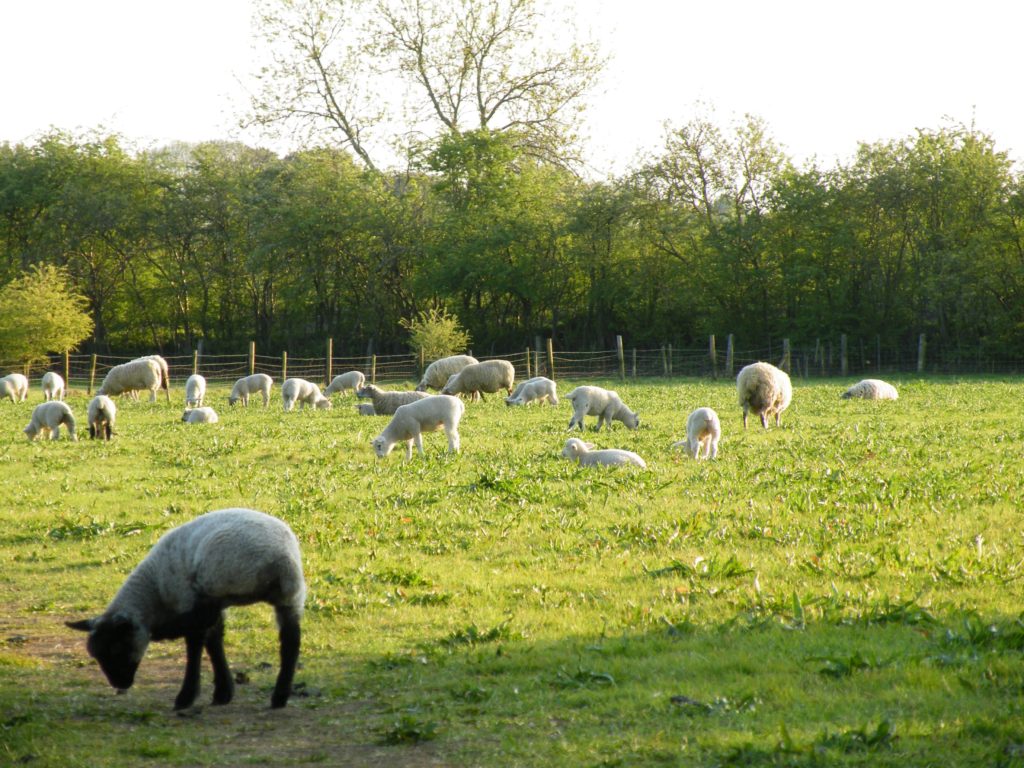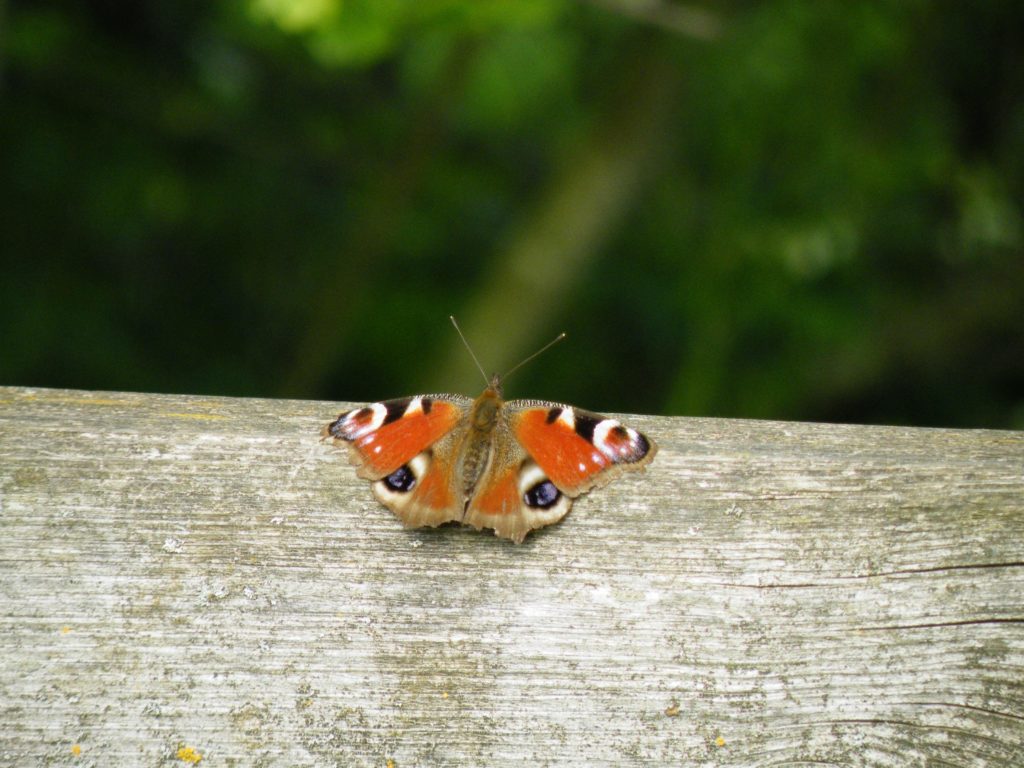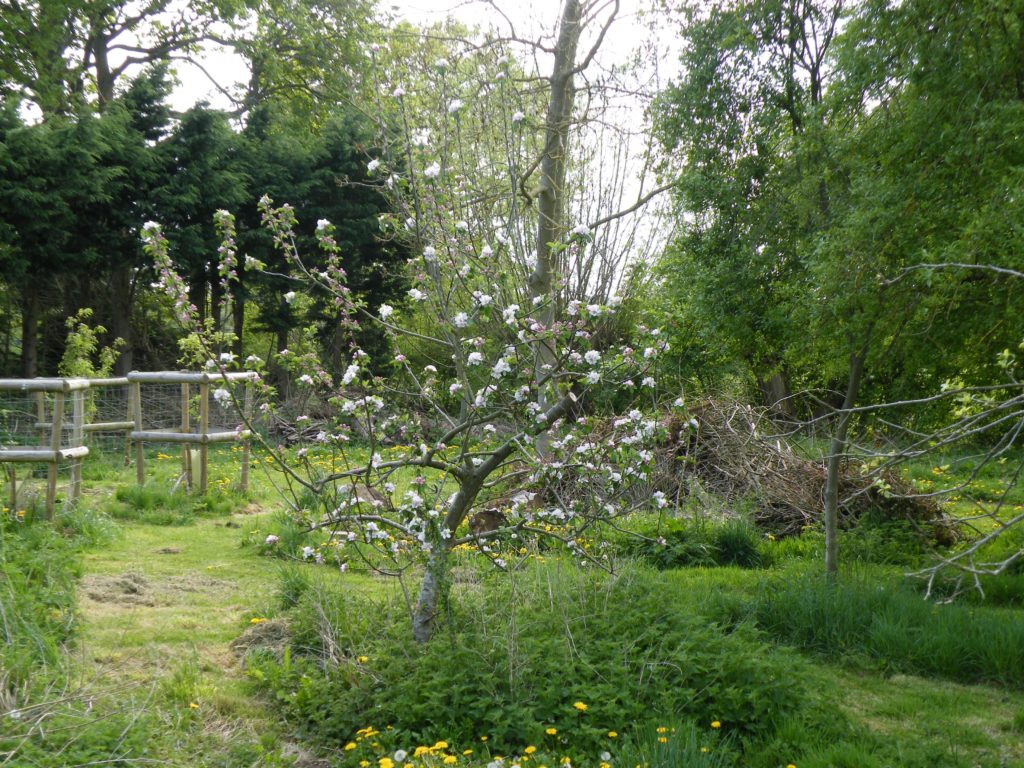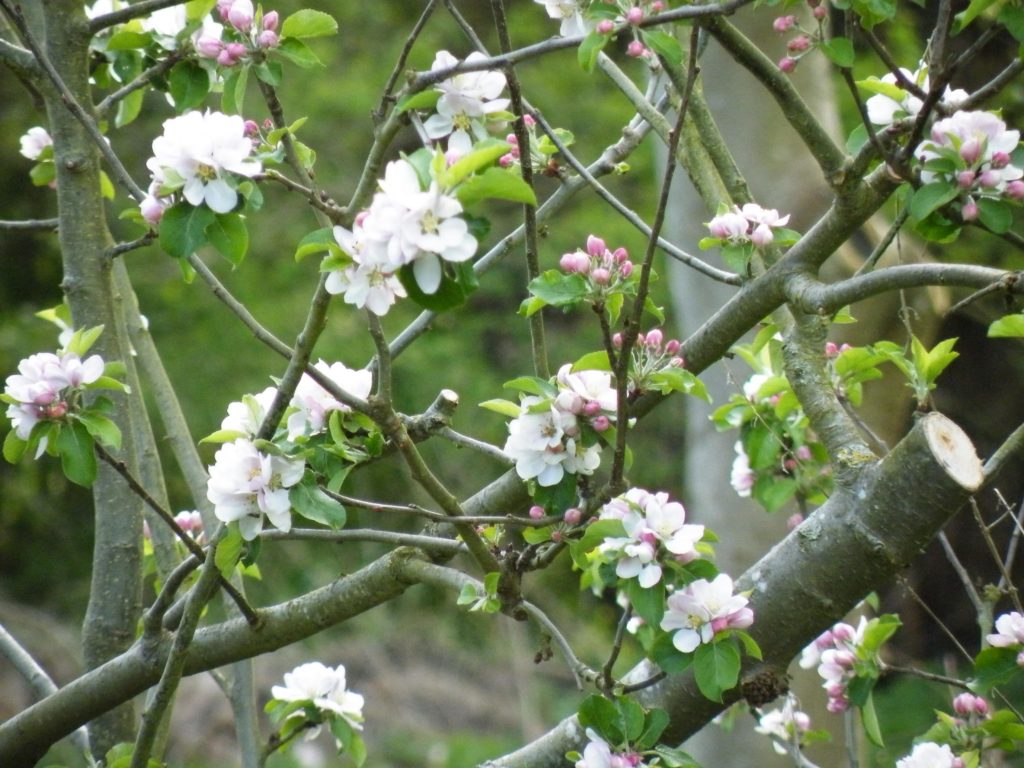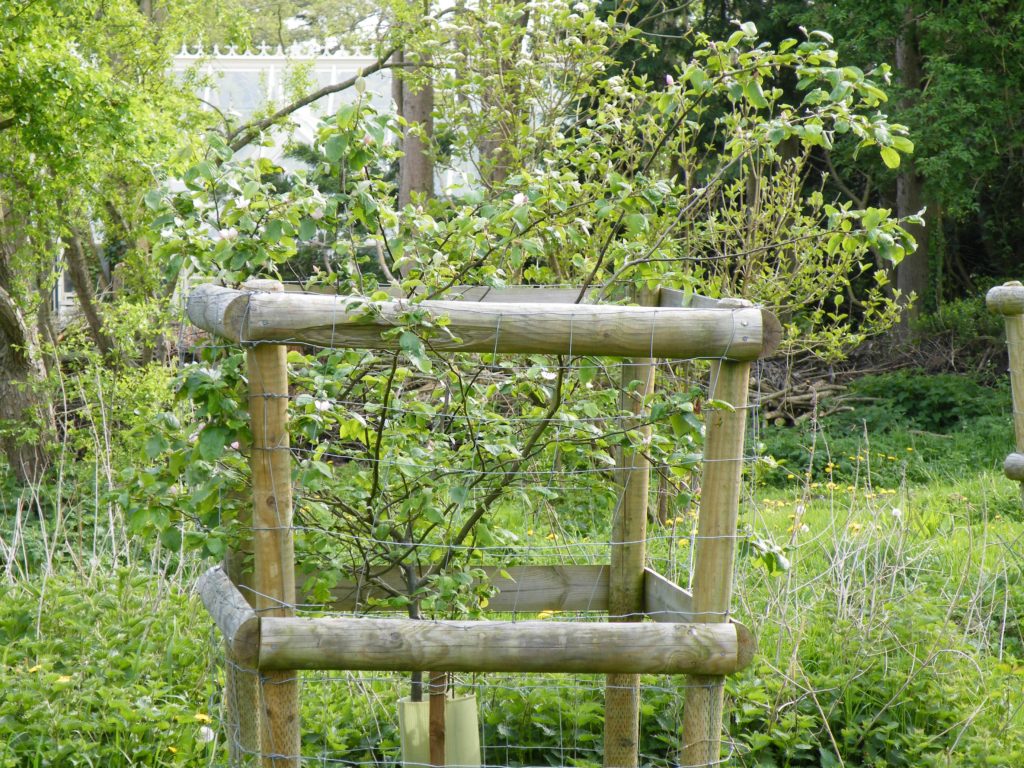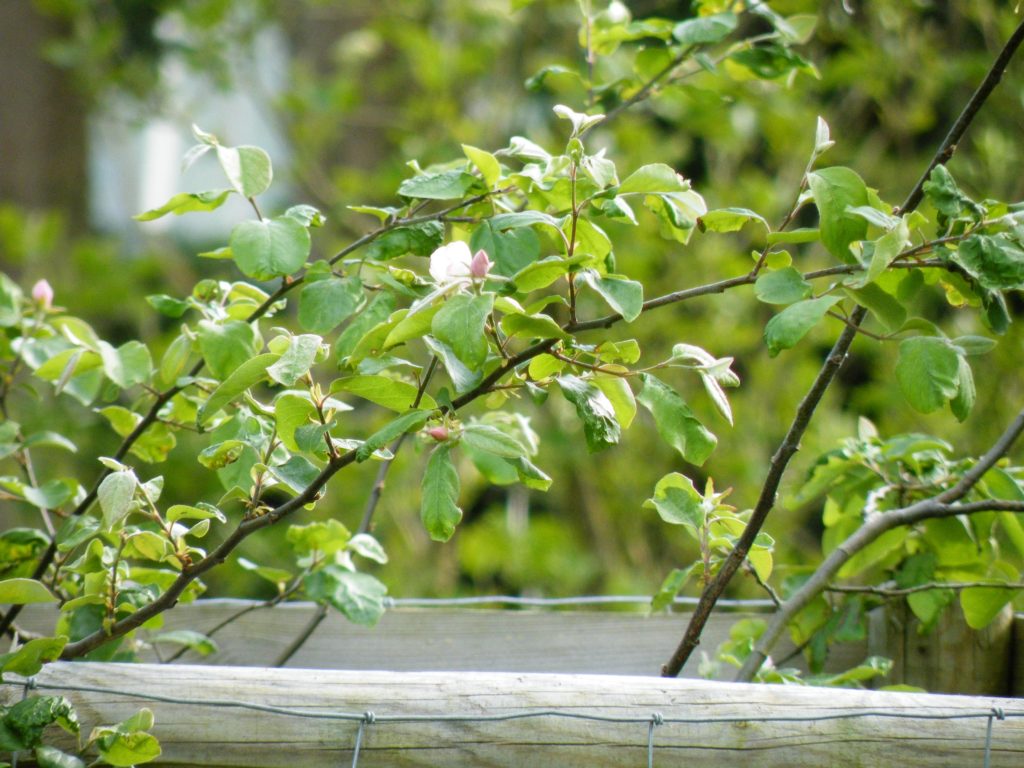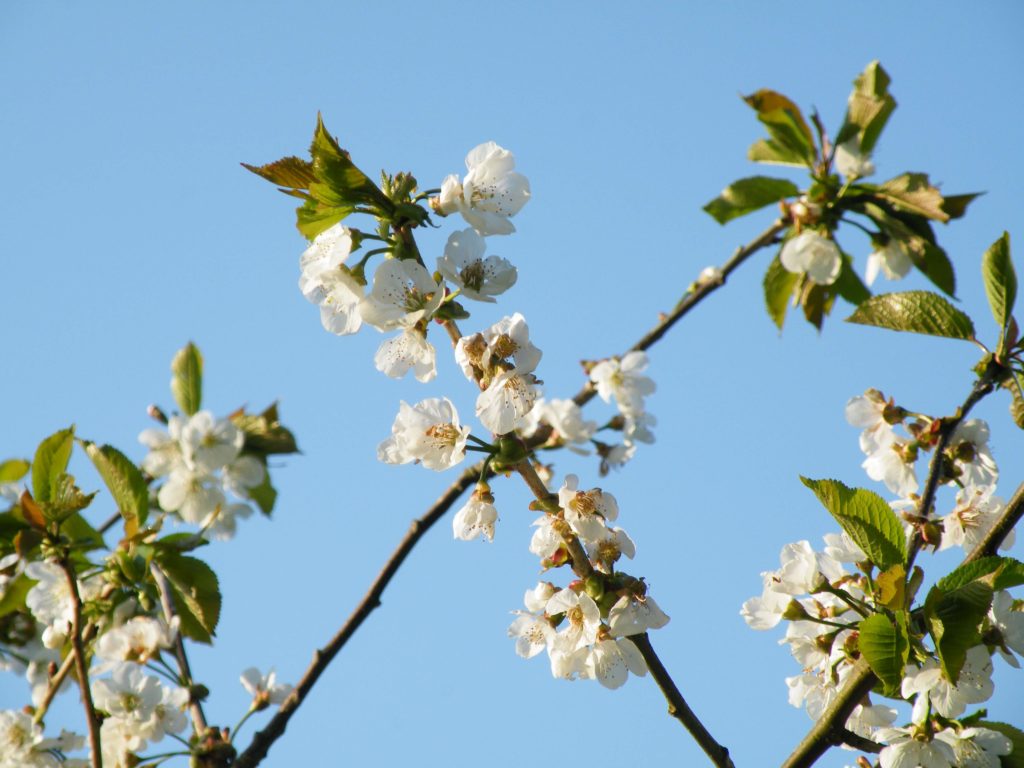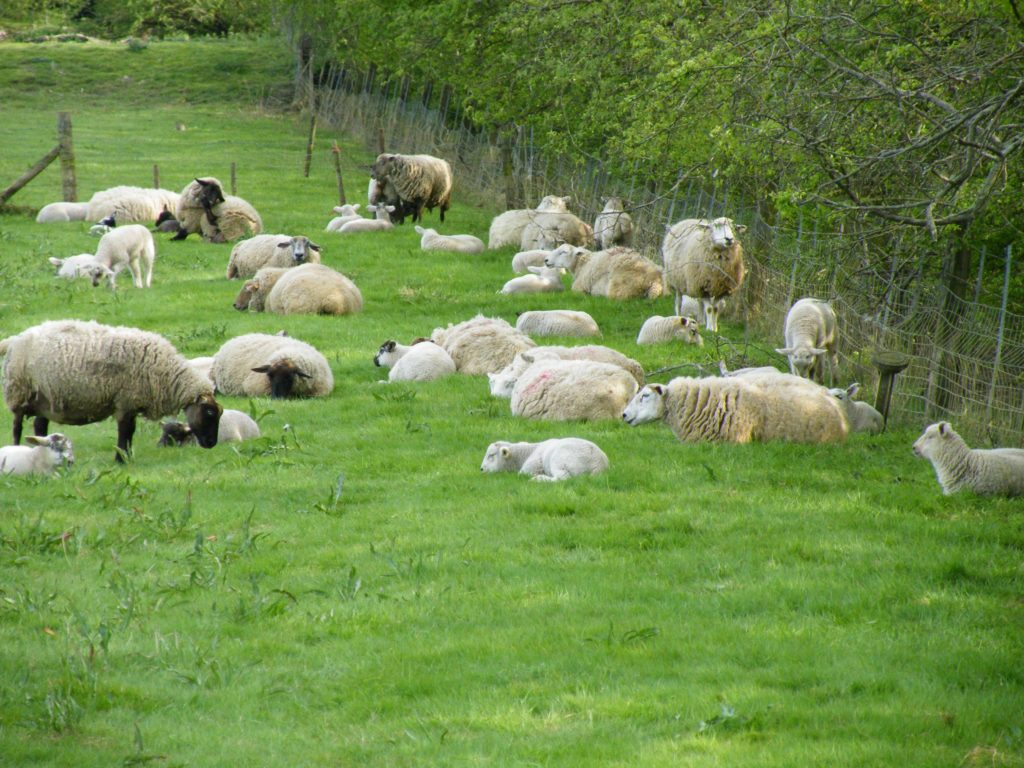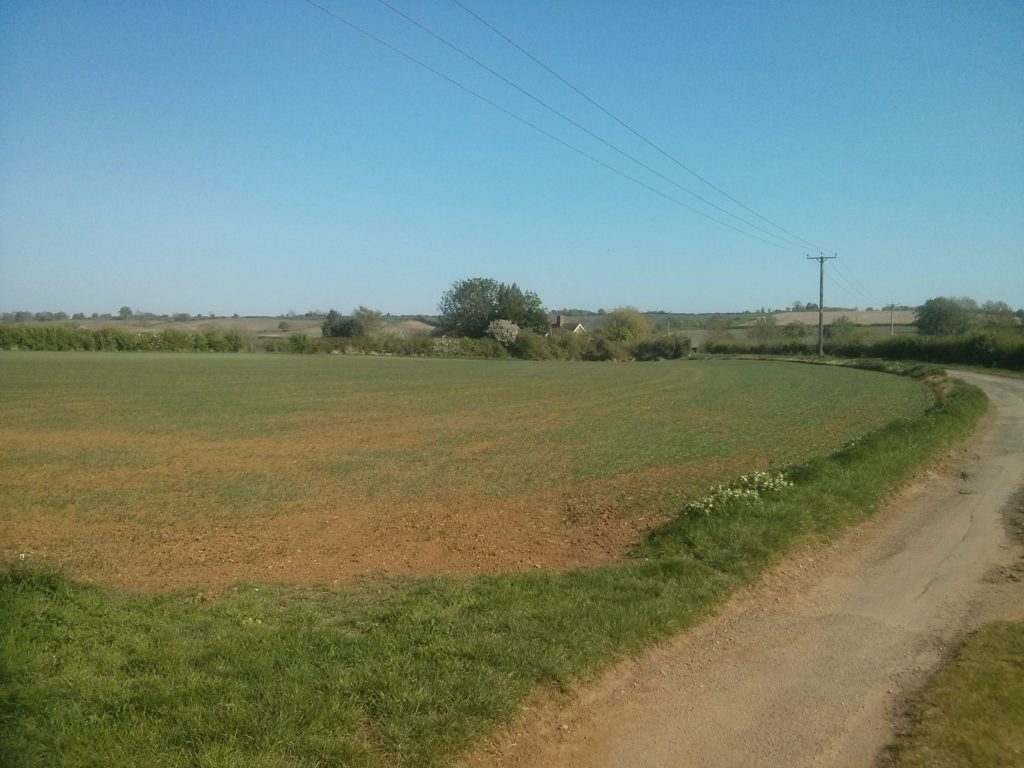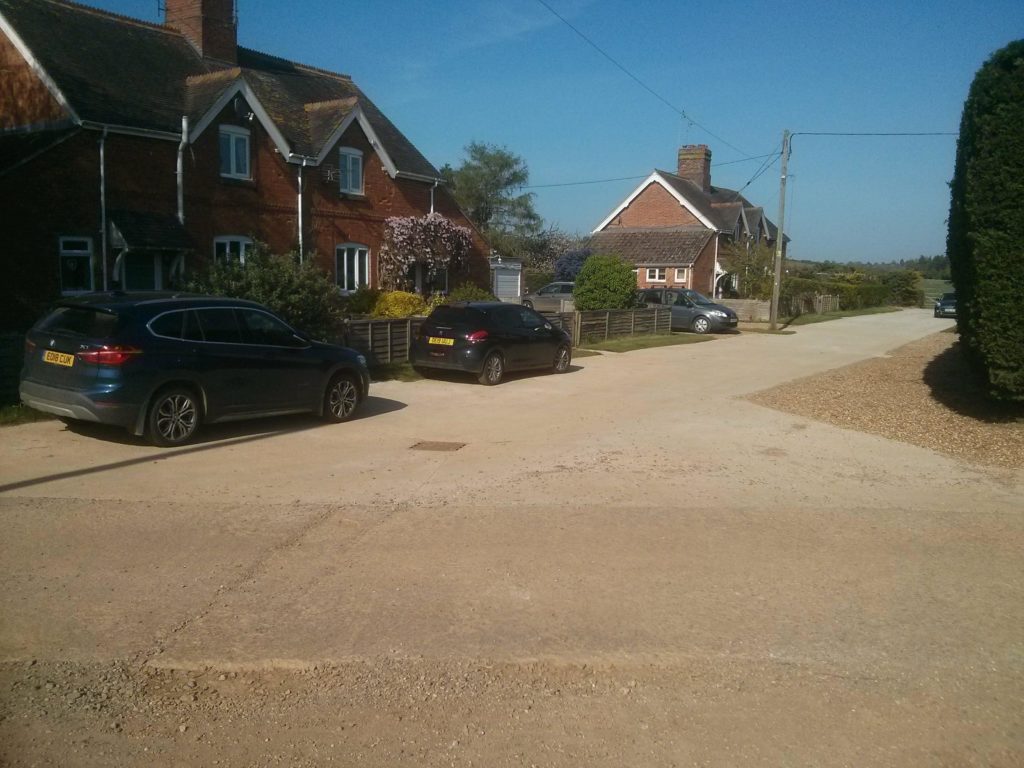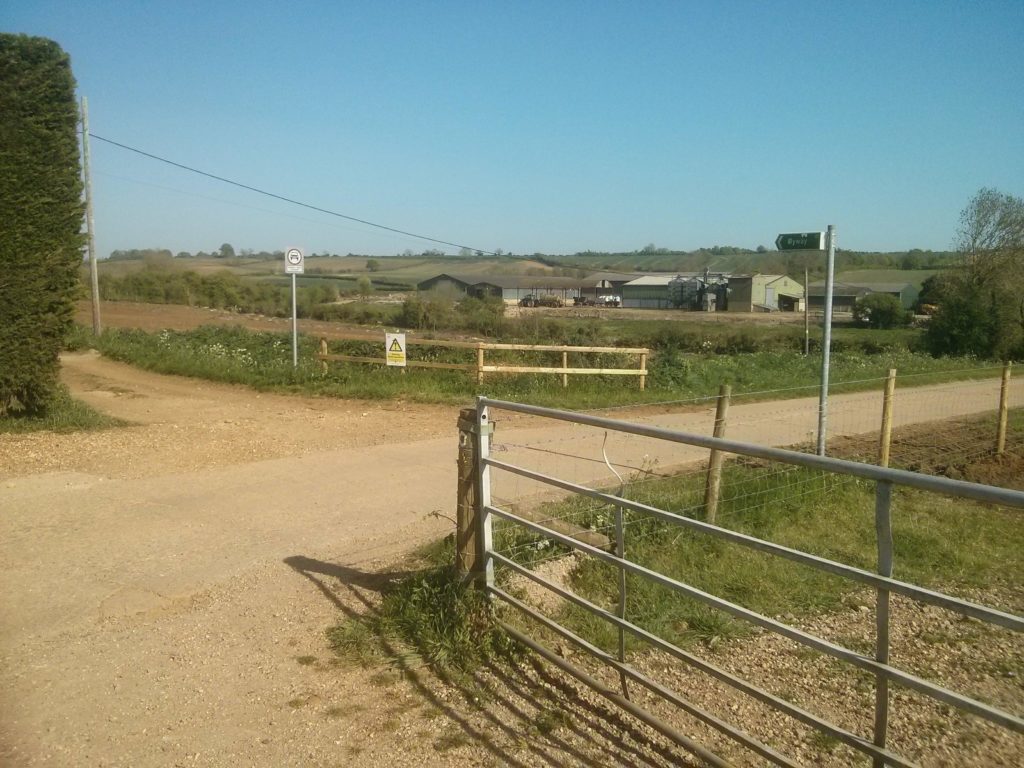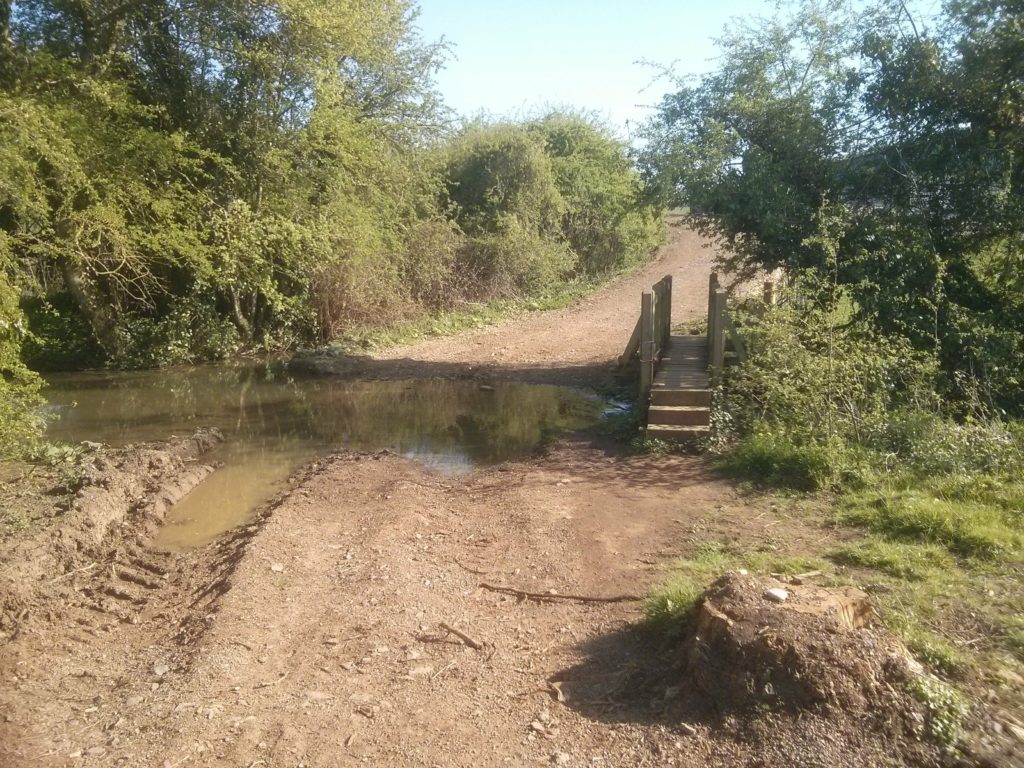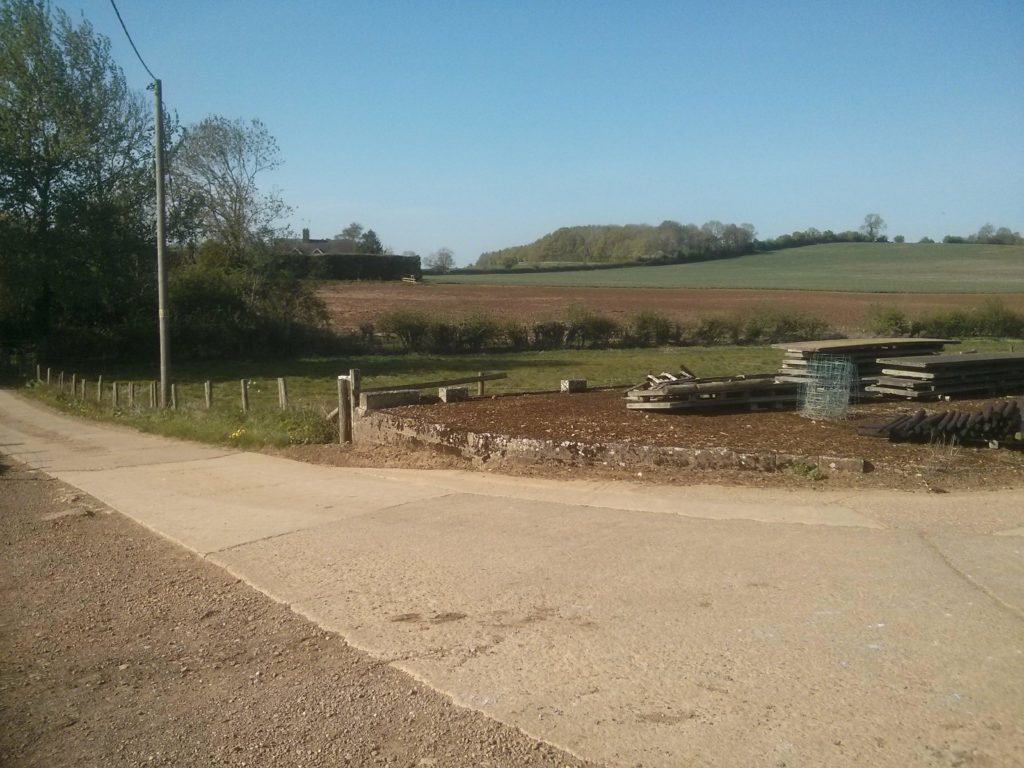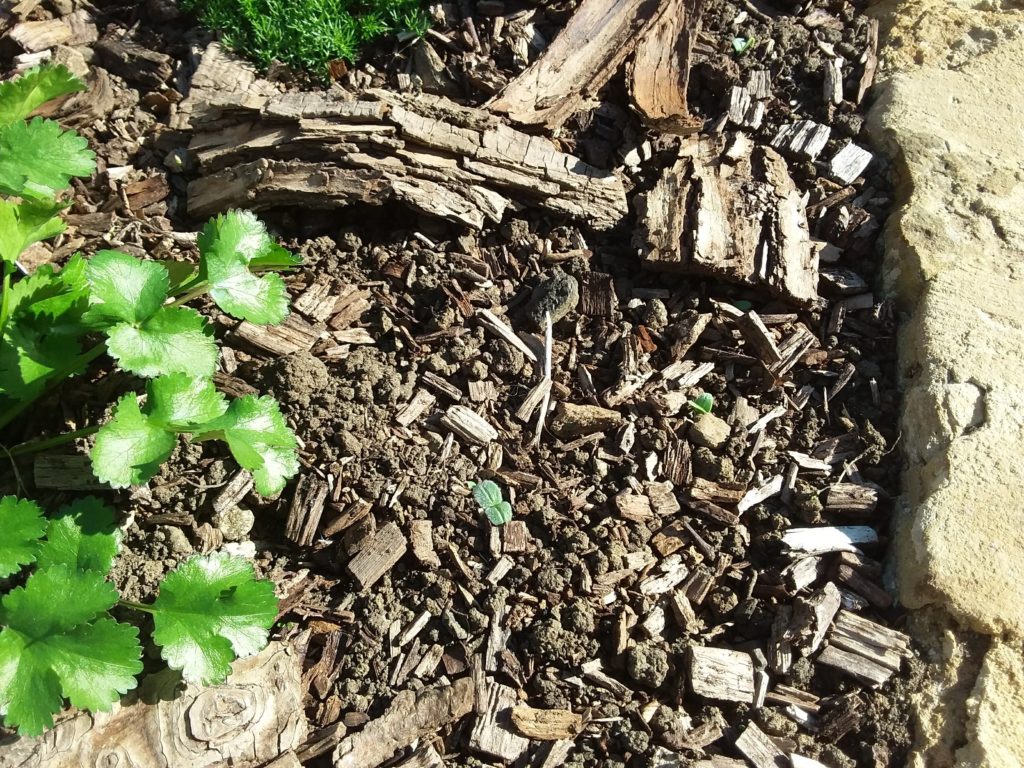On the plus side, the garden at Rumwoldstow has flowers! The two pot marigolds (orange) are vast and lush. The rosa gallica has beautiful deep pink blossoms with a rich scent. The coriander is flowering and again scenting the area, while the valerian diagonally opposite is having a good go at competing on scent. The cornflower – yes that’s just one plant! – has gone made and is taking over the world. The opium poppy has pink flowers and one completely different frilly red flower on the same plant. The peony didn’t like being transplanted and is Not Flowering but also Not Dead, so I’ll take that. And four of the six iris germanica have flowered, which I think is pretty good for their first year in the ground. The borage is just starting to flower, and for reasons I can’t fathom there is a random borage 100m away in the home garden, where I absolutely didn’t plant it! The lovage is just starting to come into flower. It’s about 60cm high but the lovage in the home garden which wasn’t transplanted must be over 2 metres. So I expect the Rumwoldstow lovage will get a lot bigger. The thyme is also flowering and the chamomile looks like it’s starting to make flower buds. The white horehound has tiny wee flowers but the bees love them.
On the down side, the fact that we still haven’t sorted out the paths is really showing oh lord the weeds…I have a tentative plan to level the ground a little better and apply hoggin (aka self binding gravel) but a lot of weeding needs doing first.
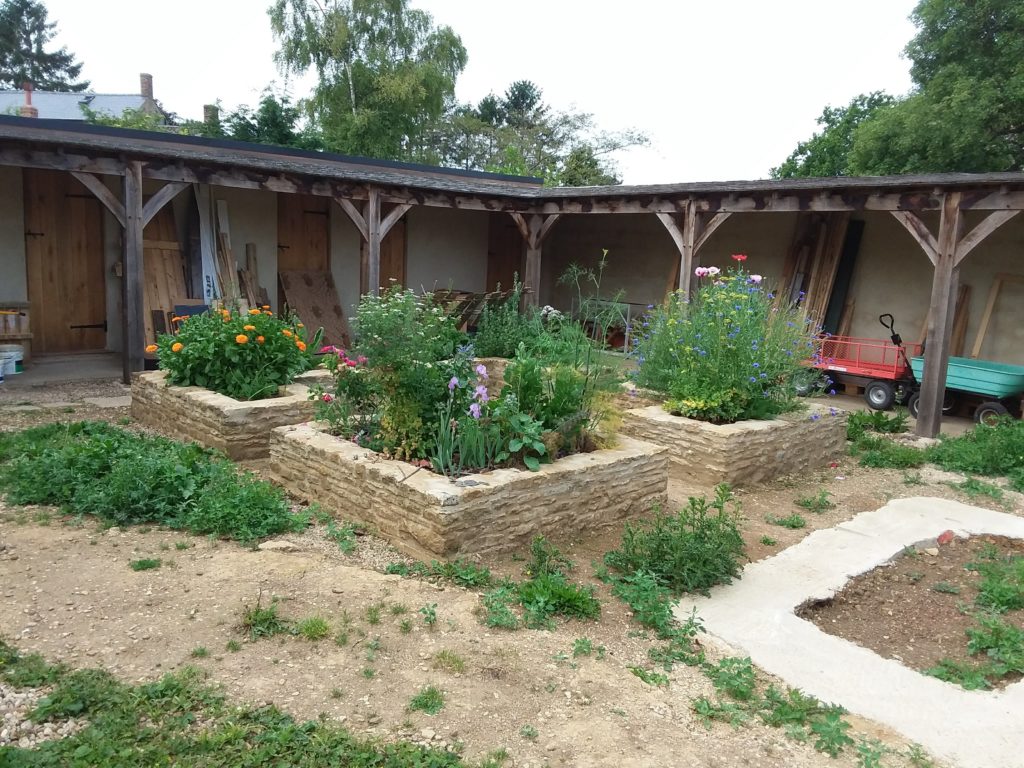
You see that pale rectangle on the ground to the right of the picture? That’s the base for the planned fifth bed where I intend to plant more utilitarian plants. Chris the stonemason has finally said he’s free to start work next week! Accordingly, I went to the National Herb Centre and bought a stash of plants against the day the bed is ready – I wanted to make sure of having the plants this season. I’ve potted them all on as it’ll probably be a month or two before the bed’s fully cured and filled with soil.
I originally asked the shop for:
- tansy
- feverfew
- hyssop
- rue
- betony
- aconite
- dyer’s madder
- ladies’ bedstraw
They replied that they had everything except tansy and aconite. I don’t mind too much about the aconite (monkshood) as it’s jolly toxic, but I’ll look out for tansy at a later date. I trundled up to collect the plants and also took a turn round the lovely garden centre.
At the end of the day, because of a few mixups one way and another, I ended up with both rue (ruta graveolens) and goat’s rue (galega officinalis), but fortunately the latter is also an Anglo-Saxon plant and completely different – I’ve no idea why they share a name. There is also a spare alecost (tanacetum balsamita) which I’ll have to find a home for somewhere in the main garden, or give away – I already have two in the square beds!
A lovely Tudor re-enactor has already given me wormwood and southernwood, so those are also in pots waiting for their home to be built and furnished. Oh, and I had already picked up a lady’s bedstraw at the local garden centre.
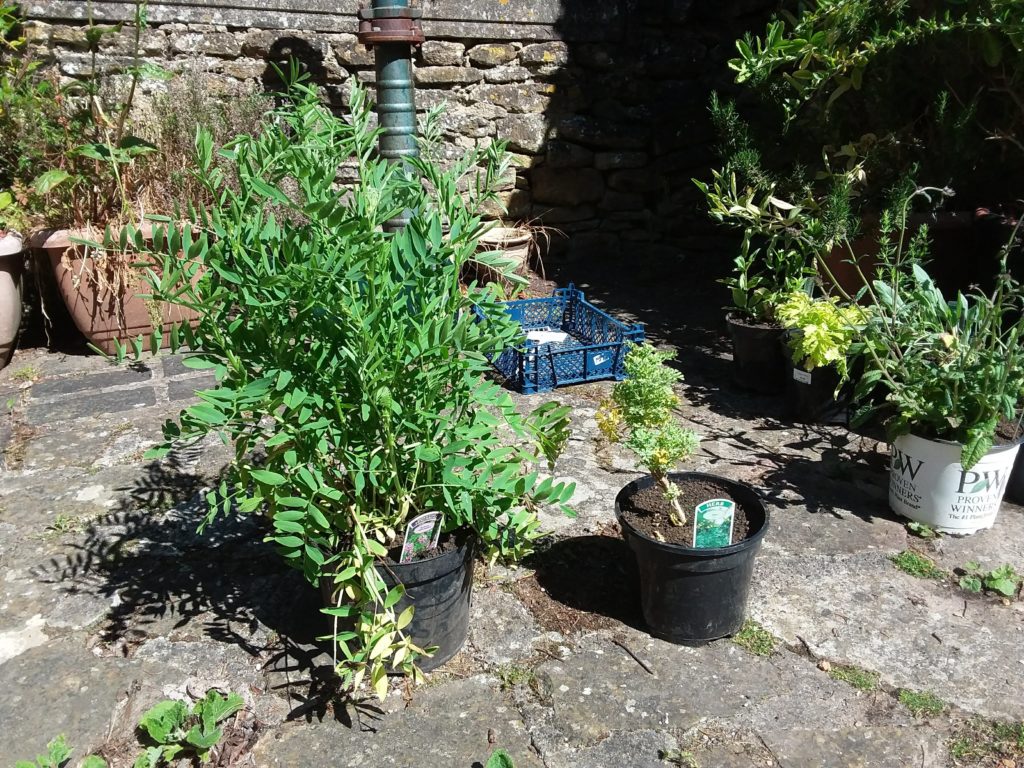
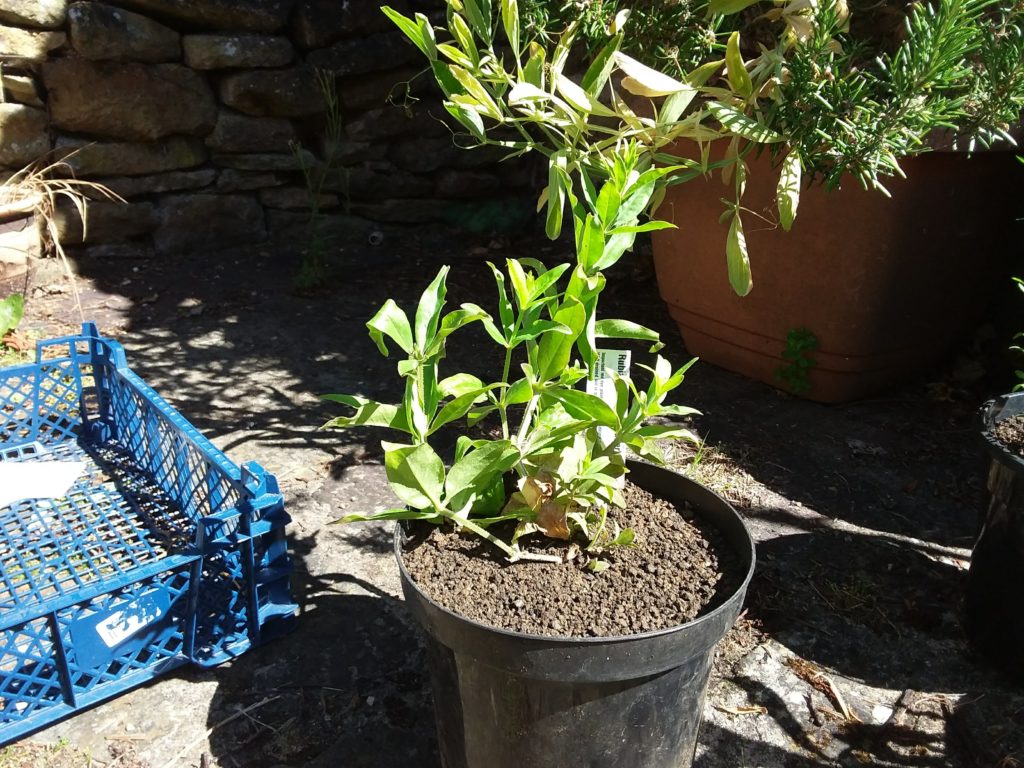
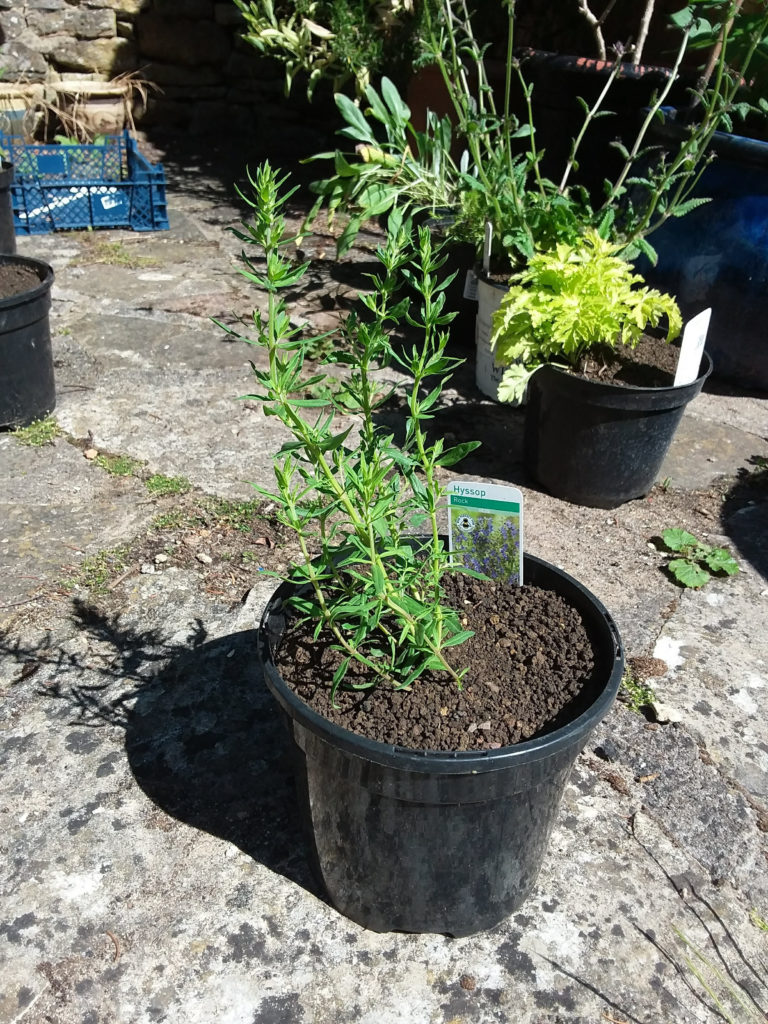
The hyssop is a subspecies, Rock Hyssop or Hyssopus officinalis ss aristatus which is apparently more compact. I don’t know its history as a plant but suspect it’s not quite the one the Anglo-Saxons would have known
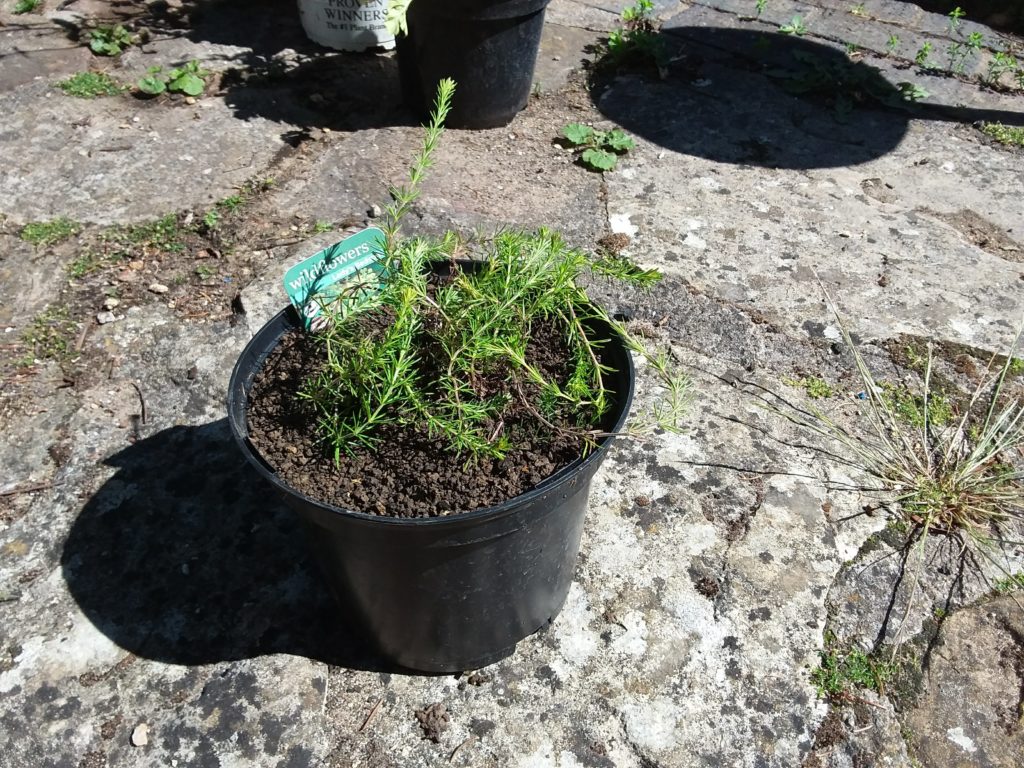

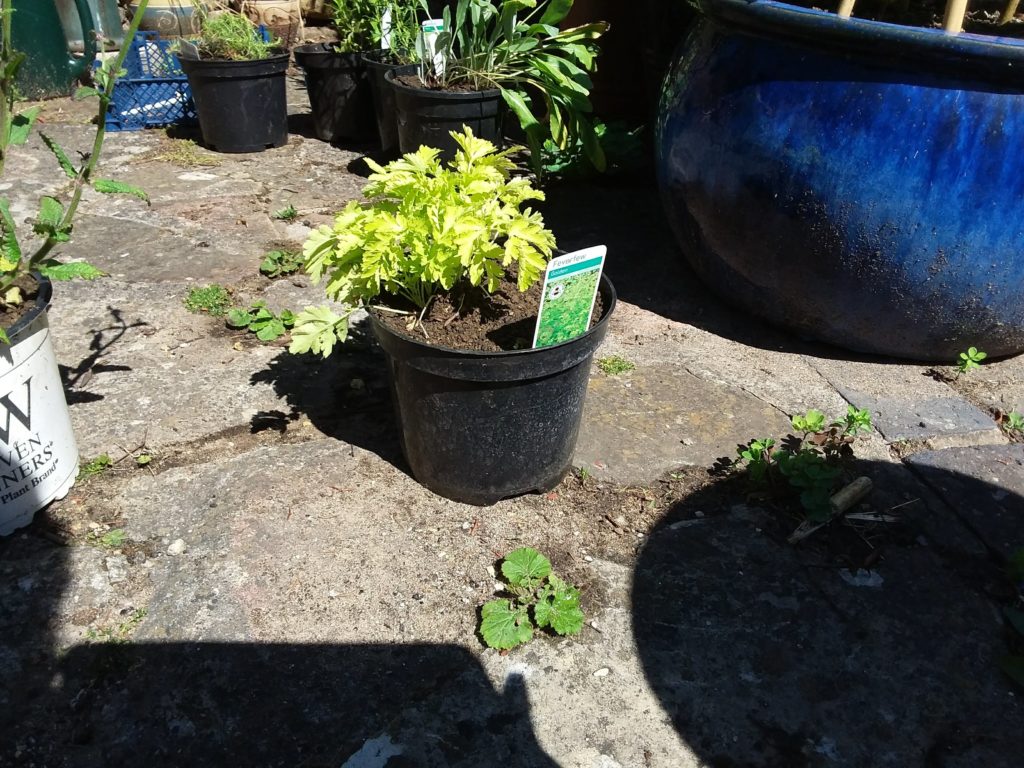
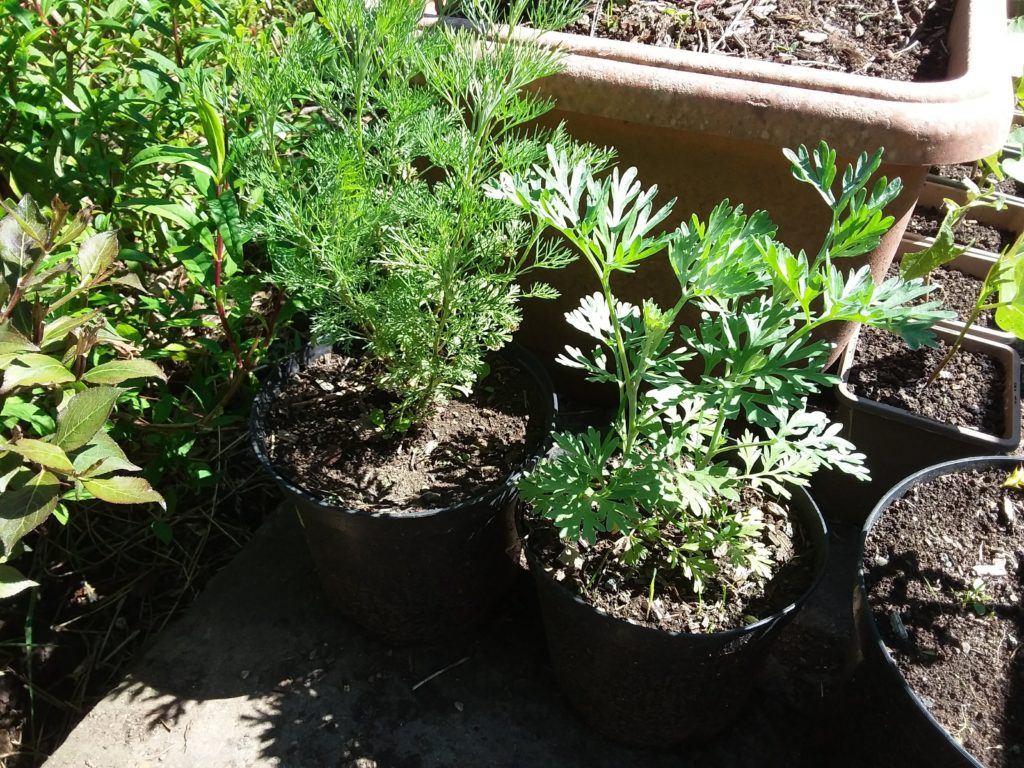
All told, a great haul and I’m doing my best to cherish them until they can go out into Rumwoldstow garden.
